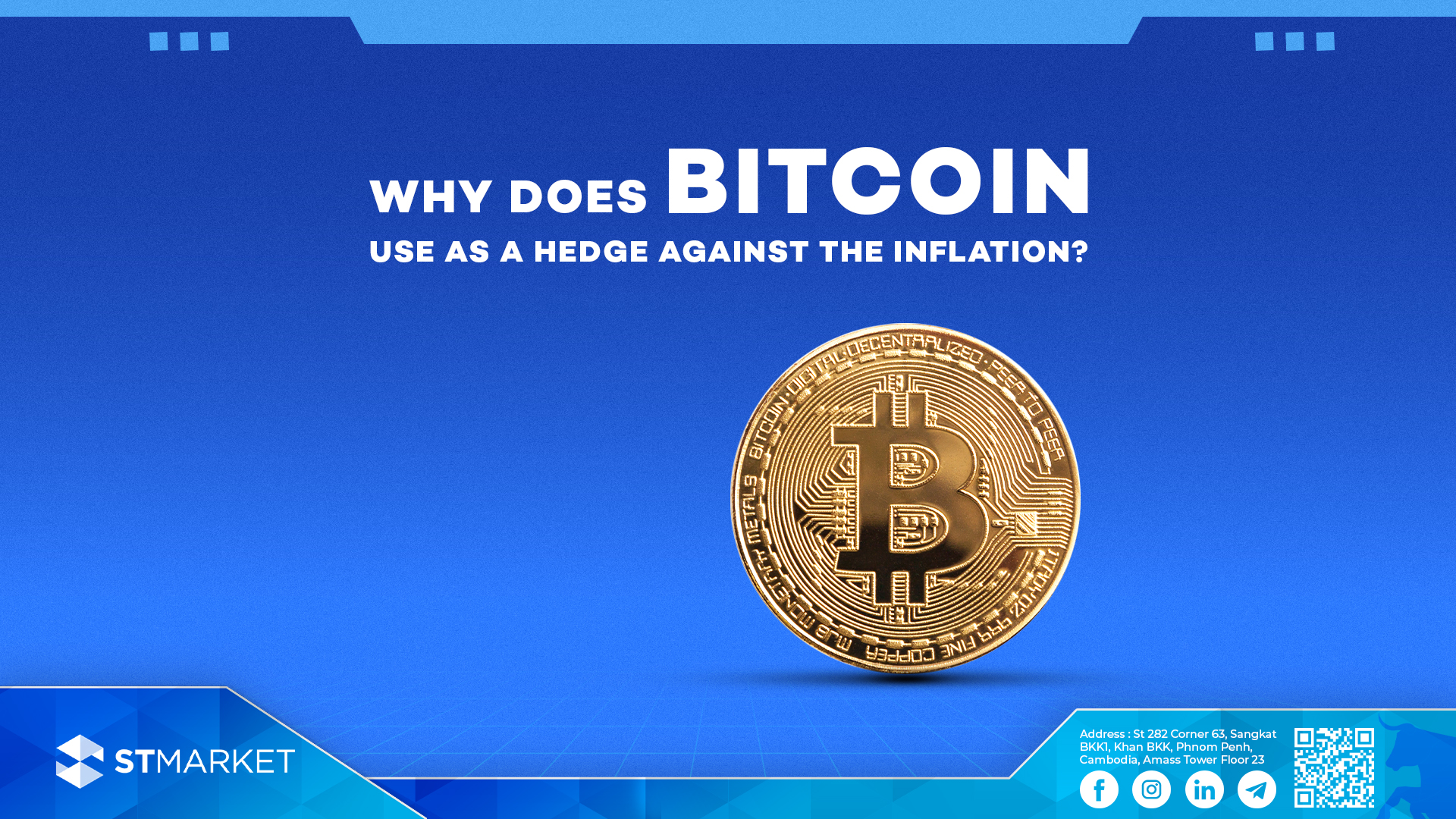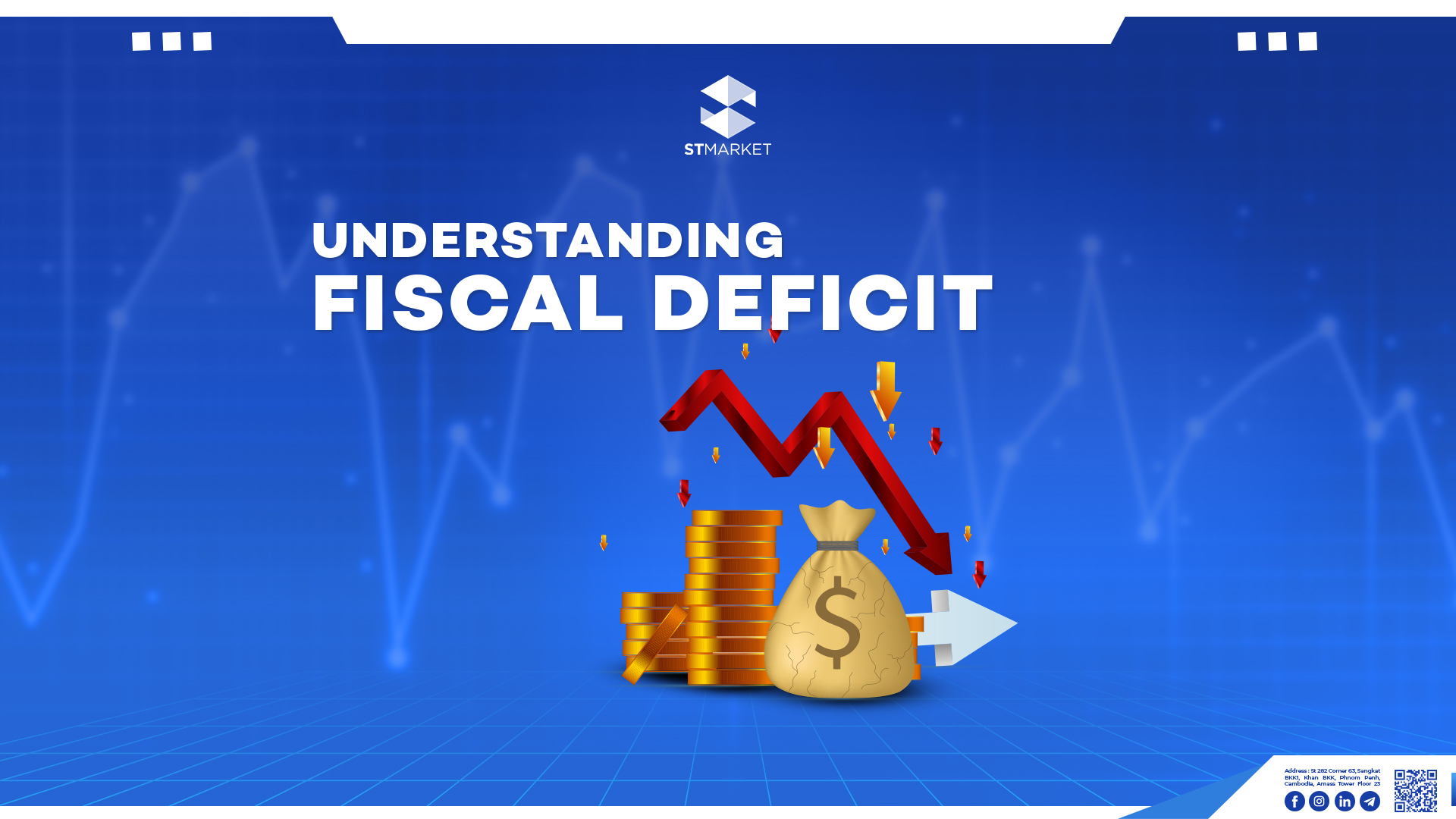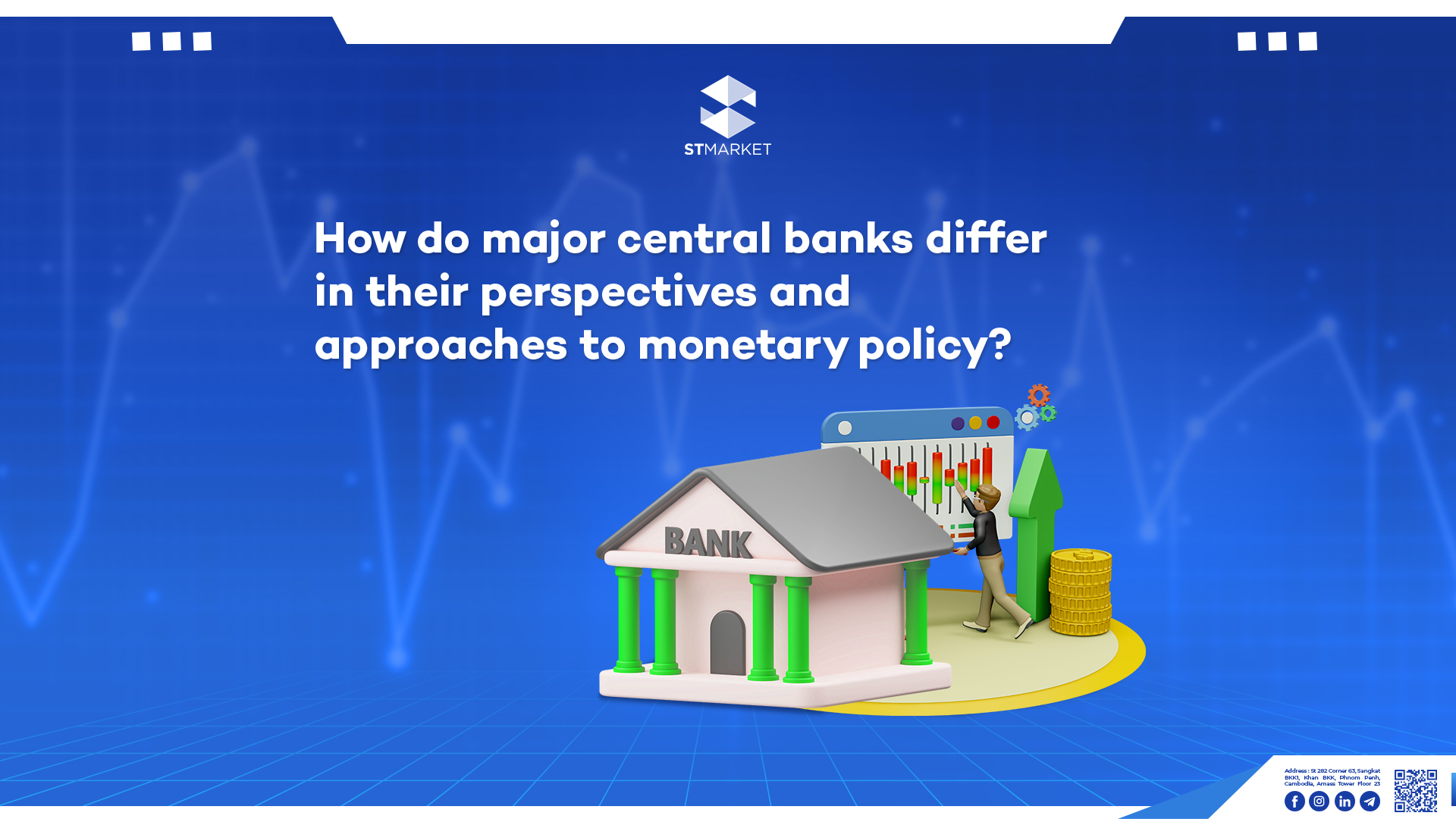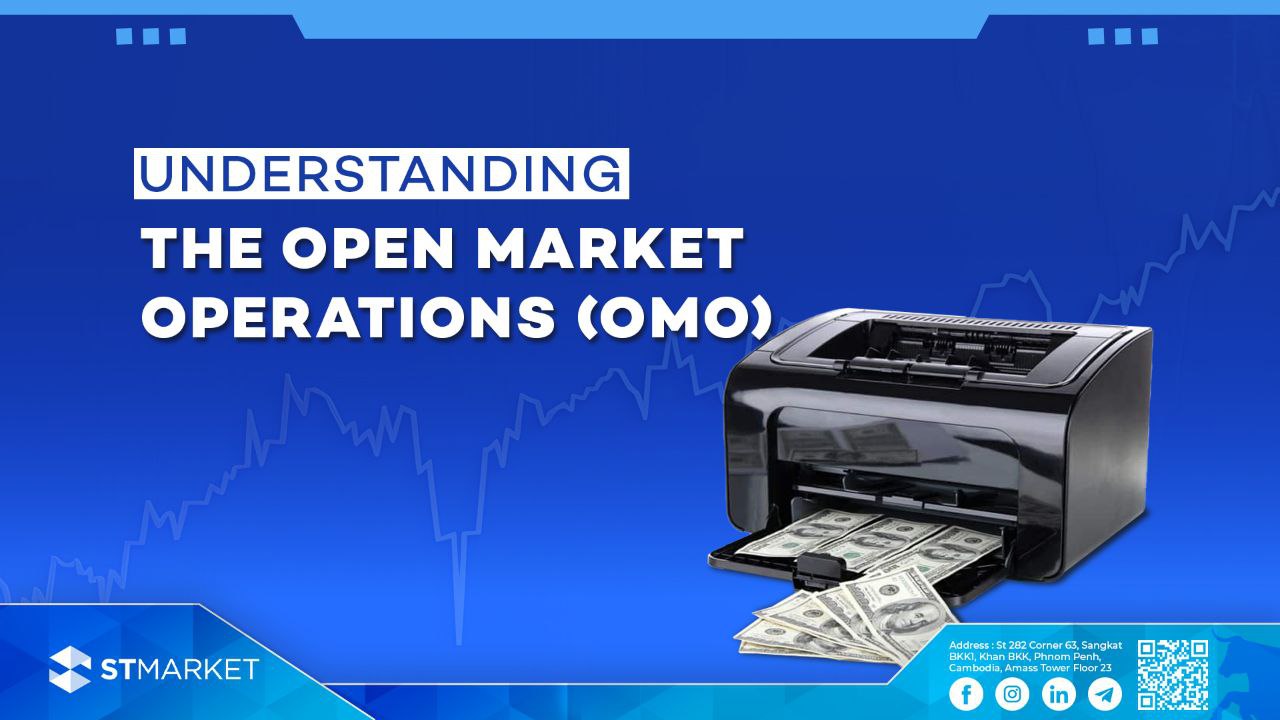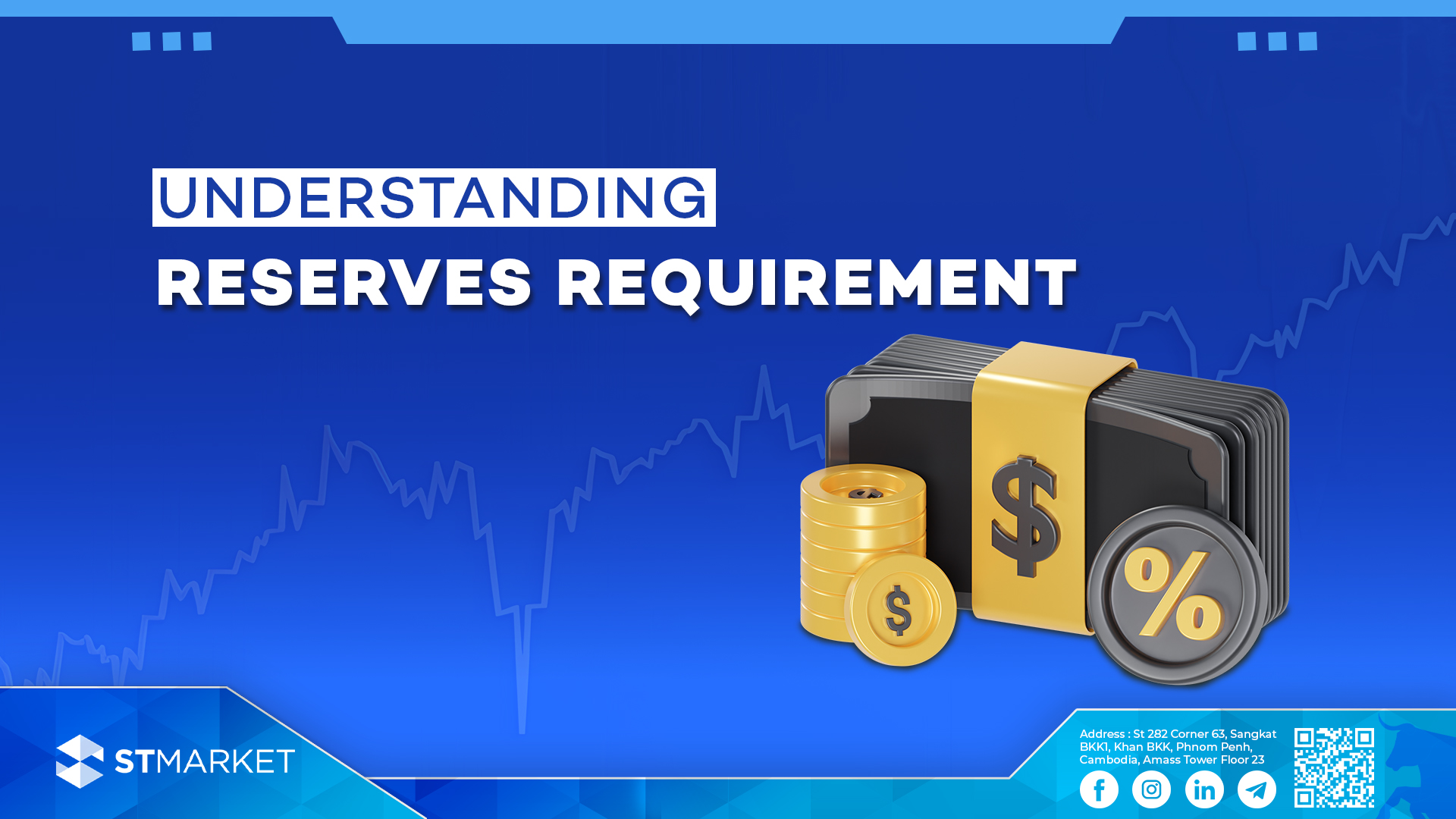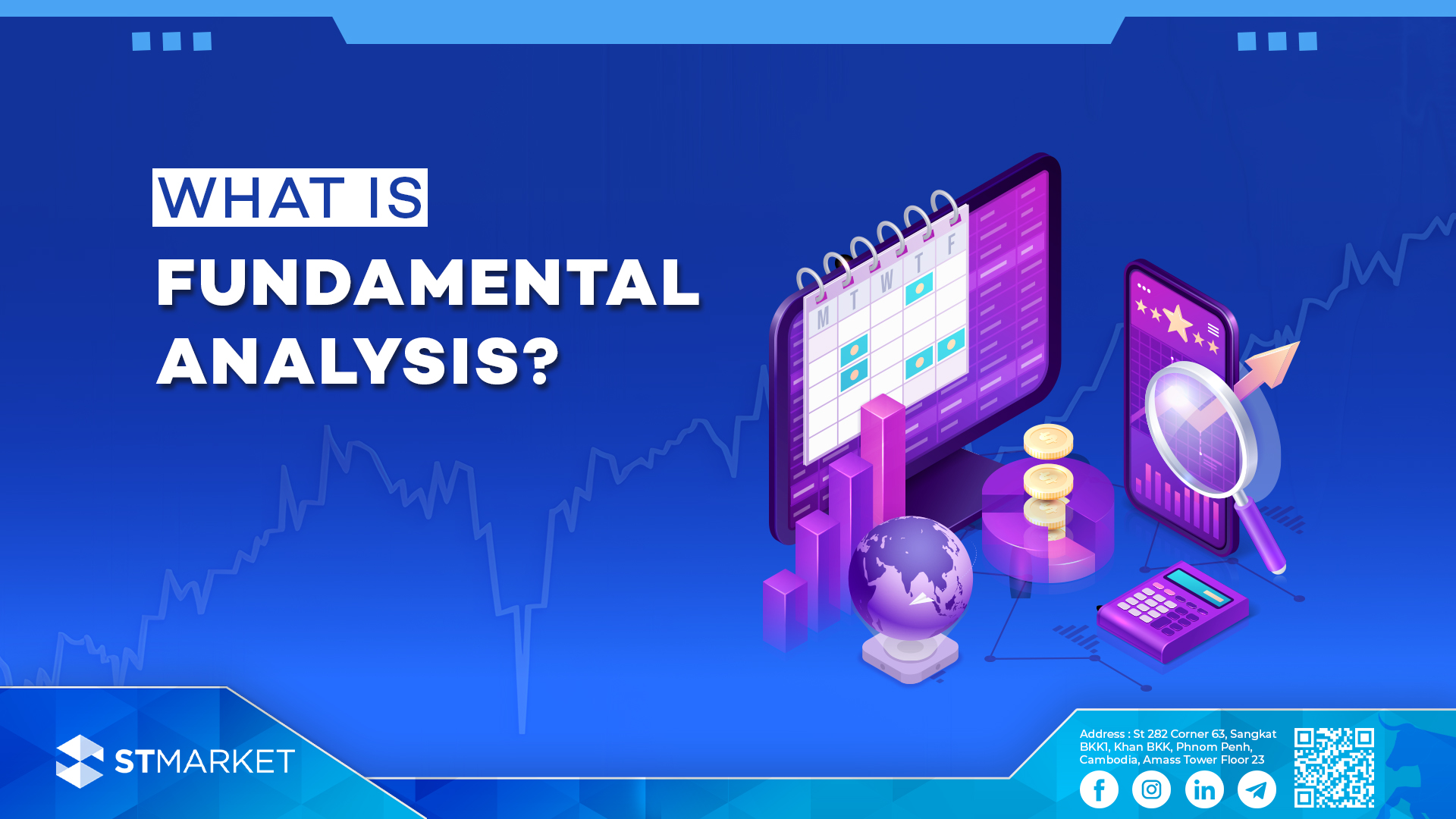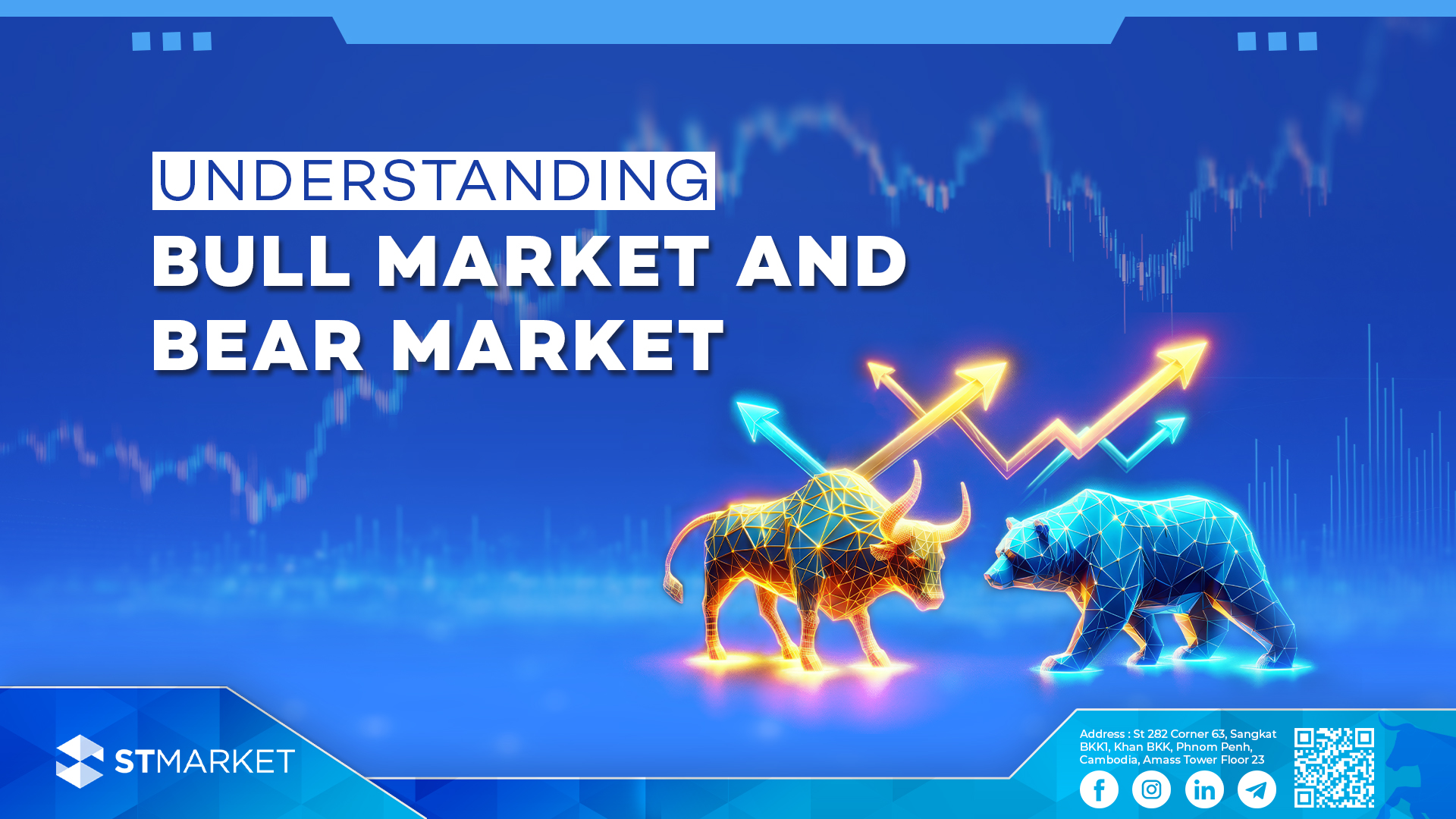សាកស្រមៃមើលសេណារីយ៉ូដែលធនាគារកណ្តាលនៅបន្តបោះពុម្ពរូបិយប័ណ្ណ ដើម្បីជំរុញកំណើនសេដ្ឋកិច្ចដែលកំពុងទន់ខ្សោយ។ ហើយការបោះពុម្ពនេះដែលធ្វើឲ្យចំនួនរូបិយប័ណ្ណមានកម្រិតលើសកំណត់នេះ បានបន្តធ្វើឲ្យអត្រាអតិផរណាកើនឡើង និងតម្លៃនៃរូបិយប័ណ្ណពួកគេធ្លាក់ចុះបន្ថែមទៀត។ ជាលទ្ធផល បុគ្គលដែលកាន់រូបិយប័ណ្ណនេះអាចនឹងប្រឈមមុខនឹងការខាតបង់ក្នុងរយៈពេលវែង។ ដូច្នេះហើយបានជាBitcoin ដែលជារូបិយប័ណ្ណឌីជីថលអាចប្រយុទ្ធប្រឆាំងនឹងអត្រាអតិផរណាបាន។ ប៉ុន្តែទៅតាមរបៀបណា? ការផ្គត់ផ្គង់មានកំណត់ និងសុវត្ថិភាពខ្ពស់ Bitcoin មានការផ្គត់ផ្គង់ថេរចំនួន 21 លានកាក់ ដែលធ្វើឱ្យវាមិនសូវងាយរងនឹងសម្ពាធអតិផរណា ពោលគឺមិនដូចរូបិយប័ណ្ណផ្សេងទេ ដែលទទួលឥទ្ធិពលដោយការបញ្ចូលលុយ។ ជាក់ស្តែងដូចកាលពីសម័យវិបត្តិហិរញ្ញវត្ថុនៅឆ្នាំ 2008 ដែលធនាគារកណ្តាលអាមេរិកបានបន្ធូរបន្ថយគោលនយោបាយតាមរយៈបោះពុម្ពប្រាក់ ព្រមទាំងការកាត់បន្ថយអត្រាការប្រាក់។ ជាលទ្ធផលគឺបានធ្វើឲ្យអត្រាអតិផរណាឡើងខ្ពស់ក្នុសេដ្ឋកិច្ចអាមេរិក។ ចំនួនប្រាក់ក្នុងស្រុកកាន់តែច្រើន → អតិផរណាកាន់តែខ្ពស់ និងធ្វើឱ្យរូបិយប័ណ្ណក្នុងស្រុកធ្លាក់ចុះ។ ទោះបីជាមនុស្សព្យាយាមបង្កើតកាក់ថ្មីដែលមានលក្ខណៈស្រដៀងគ្នាក៏ដោយ ក៏វាពិបាកនោះដែរដោយសារតែបច្ចេកទេស blockchain ដែលធានានូវភាពត្រឹមត្រូវនៃប្រតិបត្តិការ និងការពារការបង្កើតកាក់បន្ថែម។ មជ្ឈការ (Decentralization) Bitcoin គឺដំណើរការបានដោយមិនមានការគ្រប់គ្រងដោយនរណាម្នាក់នោះទេ ដែលធ្វើឲ្យវាមានសុវត្ថិភាពខ្ពស់ឬទទួលរងនូវឥទ្ធិពលពីការផ្លាស់ប្តូរគោលនយោបាយរបស់រដ្ឋាភិបាល ព្រមទាំងគោលនយោបាយសេដ្ឋកិច្ចណាមួយដែលបង្កឲ្យមានអត្រាអតិផរណា។ តម្លៃប្រតិបត្តិការទាប ប្រតិបត្តិការ Bitcoin គឺធ្វើឡើងដោយផ្ទាល់រវាងបុគ្គលម្នាក់ទៅបុគ្គលម្នាក់ទៀត ដោយមិនចាំបាច់មានអន្តរការីដូចជាធនាគារឡើយ។ នេះអាចកាត់បន្ថយការចំណាយលើប្រតិបត្តិការ និងបង្កើនល្បឿនដំណើរការកាន់តែប្រសើរជាងមុន។ កត្តាទាំងអស់នេះកំពុងធ្វើឱ្យ Bitcoin ក្លាយជាការវិនិយោគដ៏គួរឱ្យទាក់ទាញសម្រាប់មនុស្សជាច្រើន ហើយអ្នកខ្លះអាចប្រើវាជាទ្រព្យសម្បត្តិដែលមានសុវត្ថិភាពនៅក្នុងអំឡុងពេលដែលមានភាពមិនប្រាកដប្រជានៃស្ថានភាពសេដ្ឋកិច្ច។ ហើយនោះក៏ជាហេតុផលមួយទៀតដែលលោក Trump ប្រកាសអំពីវិធានការថ្មីចំពោះ Bitcoin នៅក្នុងយុទ្ធនាការឆ្នាំ 2024នោះដែរ។ នេះក៏បានធ្វើឲ្យតម្លៃ Bitcoin មានការកើនឡើងរហូតទៅដល់ 80,00 ដុល្លារ បន្ទាប់ពីជ័យជម្នះរបស់លោក Trump ។ ដូច្នេះបើប្រៀបធៀបទៅនឹង Gold Standard តើមួយណាជាជម្រើសដ៏ល្អបំផុតសម្រាប់អ្នកវិនិយោគ? ទោះបីជាមាសជាការវិនិយោគមួយដែលត្រូវបានគេទទួលស្គាល់ថាជាការវិនិយោគដ៏ល្អតាំងពីដើមសម័យមកក៏ដោយ (ជាពិសេសនៅពេលដែលសេដ្ឋកិច្ចកំពុងប្រឈមមុខនឹងអតិផរណាខ្ពស់ និងអស្ថិរភាព) ក៏ទាំងមាស និង Bitcoin ត្រូវបានគេមើលឃើញពីអត្ថប្រយោជន៍ខុសៗគ្នាអាស្រ័យទៅលើប្រភេទនៃវិនិយោគិននោះដែរ។ ខណៈពេលដែល Bitcoin អាចនឹងផ្តល់នូវទិន្នផលច្រើនត្រឡប់មកវិញ ប៉ុន្តែបម្រែបម្រួលតម្លៃរបស់វាក៏មានខ្ពស់នោះដែរ ហើយនេះផ្ទុយគ្នាពីតម្លៃមាសដែលមានទិន្នផលនិងហានិភ័យទាប។ ដូច្នេះប្រសិនបើអ្នកជាប្រភេទវិនិយោគិនដែលស្វែងរក “ហានិភ័យខ្ពស់ ផលចំណេញខ្ពស់” ហើយអាចមានលទ្ធភាពក្នុងការទប់ស្កាត់លើបម្រែបម្រួលខ្ពស់នោះ Bitcoin នឹងក្លាយជាជម្រើសដ៏សក្តិសមបំផុតសម្រាប់លោកអ្នក។ ទោះជាយ៉ាងណាក៏ដោយ ប្រសិនបើអ្នកស្វែងរកការវិនិយោគដែលមានស្ថិរភាពខ្ពស់ក្នុងរយៈពេលវែង និងហានិភ័យទាប នោះមាសអាចជាជម្រើសដែលពេញចិត្តវិញ។ ទោះបីជាយ៉ាងណាក៏ដោយ លោកអ្នកក៏គប្បីតាមដានទៅលើបទប្បញ្ញត្តិមួយចំនួនមុននឹងធ្វើការសម្រេចចិត្តវិនិយោគណាមួយ ដែលក្នុងនោះមានដូចជាប្រតិបត្តិការពន្ធនៃរូបិយប័ណ្ណឌីជីថល ព័ត៌មានរូបិយប័ណ្ណឌីជីថលរបស់ធនាគារកណ្តាល (CBDCs) ឬរបៀបវារៈថ្មីរបស់ Trump អំពីរូបិយប័ណ្ណគ្រីបតូជាដើម។ |English Version| Imagine a scenario where central banks continuously print money to stimulate a sluggish economy. This excessive money supply can lead to inflation, eroding the purchasing power of the currency. As a result, individuals holding fiat currencies may find their wealth diminishing over time. This is where Bitcoin, a decentralized digital currency, emerges as a potential hedge against inflation. But how exactly? Limited Supply and Tight security Bitcoin has a fixed supply of 21 million coins, making it less susceptible to inflationary pressure, unlike how other currencies are influenced by money injection or inflation. A prime example of this is how the Fed responded to the 2008 financial crisis through quantitative easing (money injection), which resulted in high inflation in the economy. More money supply→ higher inflation and depreciation of the domestic currency. Even if people are trying to create new coins, the tight security from the cryptographic technology (blockchain) will reject them, which ensures the integrity of transactions and prevents the creation of additional coins. Decentralization Bitcoin operates on a decentralized network, free from the control of any central authority. This decentralization makes it resistant to government manipulation and economic policies that can lead to inflation. Low Transaction Costs Bitcoin transactions are directly between individuals without the need for intermediaries like banks. This reduces the transaction costs and speeds up the process. All of these factors are making Bitcoin an attractive investment for many, and some may use it as a safe-haven asset ahead of the economic uncertainty. That is also another reason why Trump also declared on having a new agenda for Bitcoin in the 2024 campaign, resulting in a breaking record of 80,00 USD rise in Bitcoin prices after Trump’s victory. <Further information> So compared to the Gold Standard, which one would be the best choice for the investor? Although gold has already proven to be a reliable store of value and has a long history of holding on to it, especially during times of uncertainty and high inflation, unlike Bitcoin, both serve different benefits depending on investor portfolios. While Bitcoin offers the potential for high returns, it also comes with significant volatility. Gold, on the other hand, is a more traditional store of value with a longer track record. So if an investor seeks a “high risk, high return” and is comfortable with high volatility, then Bitcoin would be the most suitable one for them. However, if they prioritize stability, long-term value preservation, and lower risk, then gold might be the preferred choice for them. Regardless, there are specific regulatory concerns that investors should consider before making any investment decision with regards to the new regulation, including tax cryptocurrency transactions and central bank digital currency (CBDCs) news, or Trump’s new agenda about cryptocurrencies.
Why does a higher interest rate appreciate the domestic currency?
ហេតុអ្វីបានជាអត្រាការប្រាក់ខ្ពស់អាចធ្វើឱ្យតម្លៃរូបិយប័ណ្ណក្នុងស្រុកឡើងថ្លៃដែរ? បើនិយាយឱ្យសាមញ្ញទៅ អត្រាការប្រាក់ខ្ពស់អាចធ្វើឱ្យតម្លៃរូបិយប័ណ្ណក្នុងស្រុករបស់ពួកគេកាន់តែមានភាពទាក់ទាញសម្រាប់ទាំងវិនិយោគិនក្នុងស្រុក និងជនបរទេស។ ប៉ុន្តែហេតុអ្វីបានជាដូច្នេះ? មិនថាតែនៅក្នុងសហរដ្្ឋអាមេរិកដែលប្រាក់ដុល្លារអាមេរិកឡើងថ្លៃ ដោយសារតែការកើនឡើងនៃអត្រាការប្រាក់ប៉ុណ្ណោះទេ សូម្បីតែធនាគារកណ្តាលផ្សេងៗទៀតក៏អាចទទួលរងនូវឥទ្ធិពលនេះដូចគ្នា។ កត្តាចម្បងនោះគឺទៅលើតម្រូវការរូបិយប័ណ្ណក្នុងស្រុក ដូចជាប្រាក់ដុល្លារអាមេរិក។ ដូចគ្នានឹងតម្រូវការទៅលើផលិតផល ប្រសិនបើមានតម្រូវការកាន់តែច្រើននោះតម្លៃរបស់វាកាន់តែថ្លៃជាងមុន ហើយនេះក៏ដូចគ្នាទៅនឹងតម្លៃរូបិយប័ណ្ណនោះដែរ។ នេះដោយសារតែវិនិយោគិនតែងតែស្វែងរកប្រាក់ចំណេញខ្ពស់លើការវិនិយោគរបស់ពួកគេ។ នៅពេលដែលធនាគារកណ្តាលដំឡើងអត្រាការប្រាក់ ជាធម្មតាវាបង្កើនទិន្នផលលើសញ្ញាប័ណ្ណដែលចេញដោយប្រទេសនោះកាន់តែខ្ពស់។ ប៉ុន្តែហេតុអ្វីបានជាតម្រូវការកើនឡើង? តើនេះមានន័យថាដូចម្តេច? កត្តាដូចជាភាពរឹងមាំនៃស្ថានភាពសេដ្ឋកិច្ច តម្រូវការមានច្រើនលើសកម្រិត ព្រមទាំងកត្តាផ្សេងៗទៀតអាចធ្វើឱ្យធនាគារកណ្តាលរឹតបន្តឹងលើគោលនយោបាយរូបិយវត្ថុ ទាំងនេះសុទ្ធតែជះឥទ្ធិពលលើទិន្នផលប័ណ្ណបំណុល។ អត្រាការប្រាក់ខ្ពស់ធ្វើឱ្យមូលបត្របំណុលក្នុងស្រុកកាន់តែមានភាពទាក់ទាញសម្រាប់អ្នកវិនិយោគក្នុងស្រុក និងបរទេស។ ដូច្នេះដើម្បីទិញមូលបត្របំណុលទាំងនេះ វិនិយោគិនត្រូវផ្លាស់ប្តូររូបិយប័ណ្ណក្នុងស្រុករបស់ពួកគេទៅរករូបិយប័ណ្ណដែលពួកគេចង់ទិញមូលបត្រនោះ។ នេះបានធ្វើឱ្យតម្រូវការកើនឡើង និងអាចជំរុញតម្លៃរូបិយប័ណ្ណគោលដៅកាន់តែថ្លៃជាងមុន។ ប៉ុន្តែសូមចងចាំថា តម្រូវការរូបិយប័ណ្ណក្នុងស្រុកខ្ពស់ក៏អាចបណ្តាលមកពីការជួញដូរ (Carry Trade) ឬលំហូរចូលមូលធនពីបរទេស ឬកត្តាផ្សេងទៀតផងដែរ។ ប៉ុន្តែសំណួរមួយទៀតកើតឡើង៖ ប្រសិនបើតម្រូវការមូលបត្របំណុលកើនឡើងនោះ ហេតុអ្វីបានជាតម្លៃមូលបត្របំណុលមិនកើនឡើងដែរ? ហេតុអ្វីបានជាទិន្នផលមូលបត្របំណុលកើនឡើង? ទំនាក់ទំនងរវាងតម្រូវការ និងទីផ្សារមូលបត្របំណុលមានដំណើរការខុសពីទំនិញ និងសេវាកម្មផ្សេងទៀត។ នៅពេលដែលអត្រាការប្រាក់កើនឡើង មូលបត្របំណុលដែលទើបចេញថ្មី(New Bond) នឹងផ្តល់ទិន្នផលខ្ពស់ ធ្វើឱ្យមូលបត្របំណុលដែលមានស្រាប់ (Existing Bond) ដែលមានទិន្នផលទាបមិនសូវទាក់ទាញទៅវិនិយោគិន។ ជាលទ្ធផល វិនិយោគិនអាចនឹងលក់មូលបត្របំណុលដែលមានស្រាប់របស់ពួកគេដោយការបញ្ចុះតម្លៃ ដើម្បីស្វែងរកឱកាសវិនិយោគដ៏ទាក់ទាញបន្ថែមទៀត។ នេះបានធ្វើឱ្យតម្លៃមូលបត្របំណុលធ្លាក់ចុះ។ សរុបមក អត្រាការប្រាក់ខ្ពស់អាចពង្រឹងរូបិយប័ណ្ណឡើងថ្លៃ ដោយធ្វើឱ្យមូលបត្របំណុលរបស់វាកាន់តែទាក់ទាញដល់វិនិយោគិន។ ការកើនឡើងនៃតម្រូវការរូបិយប័ណ្ណនេះអាចនាំឱ្យតម្លៃរបស់វាមានការឡើងថ្លៃ។ ទោះជាយ៉ាងណាក៏ដោយ វាជារឿងសំខាន់ក្នុងការយល់ដឹងពីទំនាក់ទំនងបញ្ច្រាសរវាងតម្លៃមូលបត្របំណុល និងទិន្នផល។ |English Version| As simple as it sounds, a higher interest rate could potentially make their domestic currency more attractive to both locals and foreigners. But the question starts: why exactly does that appreciate? Just like higher interest rates coming from the Federal Reserve that make their US dollars more expensive, this also applies to other central banks and economies. One main factor falls onto the demand for the domestic currency, such as the US dollar itself. Just as demand for one product becomes more expensive to purchase, currencies also work the same way. This is because investors often seek higher returns on their investments. When a central bank raises interest rates, it typically increases the yield on bonds issued by that country. But why does demand increase? What do I mean by that? Factors such as a healthy economy, overloaded consumption, and other factors that push the central bank to tighten monetary policy have affected the bond market—”bond yield.” Higher interest rates make domestic bonds more attractive to both domestic and foreign investors. So to purchase these bonds, investors need to exchange their domestic currency for the target currency, which leads to increased demand and can drive up the value of the target currency. But please be mindful that higher domestic currency demand could also result from carry trade (Japan to US) or foreign capital inflow or any other factors as well. But another question arises: if demand for bonds is higher, then why don’t the bond prices increase, too? Why does only the bond yield increase? The relationship between demand and the bond market works differently from other goods and services. When interest rates rise, newly issued bonds offer higher yields, making existing bonds with lower yields less attractive. As a result, investors may be willing to sell their existing bonds at a discount to find more attractive investment opportunities. That lowers the bond prices. In summary, a higher interest rate can strengthen a currency by making its bonds more attractive to investors. This increased demand for the currency can lead to appreciation. However, it’s important to understand the inverse relationship between bond prices and yields.
Understanding Fiscal Deficit
ឱនភាពសារពើពន្ធ តើអ្នកមានធ្លាប់បានឮមនុស្សមួយចំនួននិយាយថា គោលនយោបាយថ្មីរបស់ប្រធានាធិបតីលោក Donald Trump អាចនឹងនាំឱ្យមានឱនភាពថវិកាខ្ពស់ ឬហៅថាឱនភាពសារពើពន្ធ? ពាក្យទាំងពីរនេះន័យដូចគ្នា ពោលគឺកើតឡើងនៅពេលដែលរដ្ឋាភិបាលចំណាយលើសពីចំណូល ហើយដែលនាំឱ្យមានការខ្វះខាតថវិការបស់រដ្ឋាភិបាល។ វាមានភាពស្រដៀងគ្នាទៅនឹងការចំណាយរបស់យើងនៅអំឡុងពេលវិស្សមកាលរបស់យើងអញ្ចឹង។ ប៉ុន្តែតើរដ្ឋាភិបាលចំណាយទៅលើអ្វីខ្លះ? យើងទាំងអស់គ្នាបានដឹងរួចទៅហើយថា ប្រាក់ចំណូលរបស់រដ្ឋាភិបាលភាគច្រើនបានមកពីពន្ធ ហើយក៏បានរួមចំណែកតាមរយៈការលក់ទំនិញ ឬទិន្នផលសញ្ញាប័ណ្ណសាជីវកម្មនោះដែរ។ ហើយប្រាក់ចំណូលទាំងនេះនឹងត្រូវចំណាយទៅលើទំនិញ និងសេវាកម្មសាធារណៈ រួមទាំងសន្តិសុខសង្គម ការថែទាំសុខភាព ការអប់រំ ការការពារជាតិ ឬហេដ្ឋារចនាសម្ព័ន្ធជាដើម។ ទោះជាយ៉ាងណាក៏ដោយ ឱនភាពថវិកាភាគច្រើនចាប់ផ្តើមនៅពេលដែលរដ្ឋាភិបាលអនុវត្តគោលនយោបាយសារពើពន្ធពង្រីករបស់ពួកគេដោយកាត់បន្ថយពន្ធ (ឬប្រាក់ចំណូលរបស់រដ្ឋាភិបាល) និងការចំណាយរបស់រដ្ឋាភិបាលកាន់តែច្រើន។ កត្តាផ្សេងទៀតអាចជាការរួមចំណែកតាមរយៈសង្រ្គាម គ្រោះមហន្តរាយធម្មជាតិ នយោបាយ ឬសង្គ្រាមពាណិជ្ជកម្ម។ ហើយនៅពេលដែលវាកើតឡើង នេះនឹងនាំឱ្យមានឱកាសខ្ពស់ក្នុងការមានឱនភាពសារពើពន្ធ។ ដូច្នេះ តើវាស្រដៀងនឹងគោលនយោបាយថ្មីរបស់លោក Trump ដែរឬទេ? ប៉ុន្តែត្រូវចាំថា នេះមិនតែងតែកើតឡើងនោះទេ។ ប៉ុន្តែប្រសិនបើវាកើតឡើង តើនឹងមានអ្វីកើតឡើងចំពោះសេដ្ឋកិច្ច? បញ្ហាដែលងាយនឹងកើតជាងគេបំផុតគឺ “បំណុលជាតិខ្ពស់” ដែលអាចប៉ះពាល់ដល់ហិរញ្ញវត្ថុរបស់រដ្ឋាភិបាល ក៏ដូចជាការកំណត់ឱកាសវិនិយោគផងដែរ។ ដូច្នេះ ប្រសិនបើរដ្ឋាភិបាលជ្រើសរើសផ្តល់ហិរញ្ញប្បទានដល់បំណុលតាមរយៈការបោះពុម្ពប្រាក់កាន់តែច្រើន នោះវានឹងនាំមកនូវអតិផរណាកាន់តែច្រើនចូលមក និងបំផ្លាញអំណាចទិញរូបិយប័ណ្ណ។ ដូច្នេះ នេះនឹងនាំឱ្យមានកំណើនសេដ្ឋកិច្ចយឺត និងធ្វើឱ្យរូបិយប័ណ្ណក្នុងស្រុកធ្លាក់ចុះ។ តើវាតែងតែជារឿងអាក្រក់មែន ឬទេ? មិនមែនអ្វីៗទាំងអស់សុទ្ធតែជារឿងអាក្រក់នោះទេ។ សូមចាំថា ឱនភាពសារពើពន្ធកើតឡើងនៅពេលដែលរដ្ឋាភិបាលចំណាយលើសពីប្រាក់ចំណូលរបស់ពួកគេហើយពួកគេប្រើដើម្បីផ្តល់មូលនិធិសម្រាប់ហេដ្ឋារចនាសម្ព័ន្ធសាធារណៈដែលនឹងធ្វើឱ្យផលិតភាពកាន់តែល្អប្រសើរក្នុងរយៈពេលវែង។ ដូច្នេះ នេះក៏មានន័យថា រដ្ឋាភិបាលមានគោលបំណងជំរុញសកម្មភាពសេដ្ឋកិច្ចតាមរយៈការបង្កើតការងារបន្ថែម និងជំរុញតម្រូវការផងដែរ។ ប៉ុន្តែអ្វីដែលអាក្រក់ជាងនេះគឺពេលវេលានៃការប៉ះពាល់ ពោលគឺមិនមានភាពច្បាស់លាស់ថា សេដ្ឋកិច្ចអាចនឹងមានការរីកចម្រើនល្អ ឬអាក្រក់នោះទេ។ |English Version| Fiscal Deficit Ever heard of how people say Donald Trump’s new policies will lead to a higher budget deficit or what we know as a fiscal deficit? Well, both terms are essentially the same thing where the government overspending than their government revenue and that leads to a shortfall in the government’s budget. Think of it as how we always overspend during our holiday seasons. But where does the government spend? We all know that primary government income comes from taxation, and the remaining is contributed through sales of goods or corporate bond yield. And this income will be spent on public goods and services, including social security, healthcare, education, national defense, or infrastructure. However, budget deficits mainly start when the government implements its expansionary fiscal policy by reducing the tax (or government income) and increasing government spending. Other factors could contribute through war, natural disasters, political factors, or trade wars, for instance. And when that happens, this will ultimately lead to a higher chance of having fiscal deficits. So is it similar to what Trump’s new policies are now? But remember, this does not always happen. But if it does, what will happen to the economy? The most persistent problem is “debt accumulation” or “high national debt” which can strain the government finances as well as limit the investment opportunity. So if the government chooses to finance the debt by printing more money, then this will bring more inflation coming in and erode the purchasing power of currency. In response, this will lead to slower economic growth and depreciate the domestic currency. Is it always a bad thing? Not everything is a bad thing. Remember, fiscal deficits happen when the government overspends their income and they use it to fund public infrastructure projects that will improve productivity over the long term. So this also means that the government aims to stimulate economic activities by creating more jobs and boosting demand. But the worst part is the timing of the impact, whether the economy will grow better or worse.
How do major central banks differ in their perspectives and approaches to monetary policy?
តើធនាគារកណ្តាលធំៗមានទស្សនៈនិងវិធីសាស្រ្តយ៉ាងដូចម្តេចចំពោះគោលនយោបាយរូបិយវត្ថុរបស់ពួកគេរៀងៗខ្លួន? ដូចដែលយើងបានដឹងរួចមកហើយ តួនាទីចម្បងរបស់ធនាគារកណ្តាលគឺសម្រេចឲ្យបាននូវស្ថិរភាពតម្លៃ បង្កើនចំនួនការងារ និងលើកកម្ពស់កំណើនសេដ្ឋកិច្ចតាមរយៈការកែសម្រួលគោលនយោបាយរូបិយវត្ថុ។ ទោះជាយ៉ាងណាក៏ដោយ តើធនាគារកណ្តាលធំៗមានភាពខុសប្លែកគ្នាយ៉ាងណានៅក្នុងទស្សនៈ និងវិធីសាស្រ្តលើគោលនយោបាយរូបិយវត្ថុរបស់ពួកគេ? ធនាគារកណ្តាលសំខាន់ៗនៅក្នុងសកលលោករួមមាន ធនាគារកណ្តាលនៅអាមេរិក (Federal Reserve ឬFED) ធនាគារកណ្តាលអឺរ៉ុប (European Central Bank ឬECB) ធនាគារកណ្តាលនៅចក្រភពអង់គ្លេស (BoE) ធនាគារកណ្តាលនៅកាណាដា (Bank of Canada ឬBoC) ធនាគារកណ្តាលនៅជប៉ុន (Bank of Japan ឬBoJ) និងធនាគារកណ្តាលនៅអូស្ត្រាលី (Reserve Bank of Australia ឬRBA) ។ ការប្រៀបធៀបគោលដៅរបស់ធនាគារកណ្តាលធំៗទៅលើស្ថានភាពសេដ្ឋកិច្ច ខណៈពេលដែលធនាគារកណ្តាលមានគោលដៅចម្បងរួមគ្នា ប៉ុន្តែពួកគេតែងតែផ្តល់អាទិភាពដល់គោលបំណងទាំងនេះខុសៗគ្នា ស្របតាមស្ថានភាពសេដ្ឋកិច្ចរៀងៗខ្លួន។ គោលបំណងរបស់ពួកគេផ្សេងៗគ្នា ជាក់ស្តែងធនាគារកណ្តាលនៅអាមេរិក (Federal Reserve ឬFED) និងធនាគារកណ្តាលនៅកាណាដា (Bank of Canada ឬBoC) ភាគច្រើនផ្តោតសំខាន់ទៅលើការសម្រេចឲ្យបាននូវគោលដៅធំៗចំនួនពីរគឺ ថិរភាពតម្លៃ និងចំនួនការងារច្រើន។ ខណៈពេលដែលធនាគារកណ្តាលអឺរ៉ុប (ECB) និងធនាគារកណ្តាលអង់គ្លេស (BoE) ផ្តោតជាចម្បងលើស្ថិរភាពតម្លៃតែមួយ។ លើសពីនេះទៅទៀត ធនាគារកណ្តាលជប៉ុនដែលធ្លាប់ប្រឈមមុខនឹងបញ្ហាបរិត្តផរណាកាលពីសម័យមុន នាពេលនេះពួកគេនឹងតាមដានទៅលើកំណើនសេដ្ឋកិច្ចព្រមទាំងអត្រាអតិផរណាច្រើនជាងគេ។ ហើយនេះជាអ្វីដែលធ្វើឱ្យធនាគារកណ្តាលជប៉ុនស្ថិតក្នុងស្ថានភាពខុសគ្នាខ្លាំងបើធៀបនឹងដៃគូរបស់ខ្លួន ជាពិសេសនៅពេលនេះដែលធនាគារកណ្តាលសំខាន់ៗភាគច្រើនកំពុងចាប់ផ្តើមក្នុងវដ្តនៃការបន្ធូរបន្ថយរបស់ពួកគេ។ ប៉ុន្តែធនាគារកណ្តាលជប៉ុន (BOJ) វិញ គឺពួកគេចាប់ផ្តើមផ្តោតលើការរឹតបន្តឹងគោលនយោបាយរូបិយវត្ថុ។ ឧទាហរណ៍មួយទៀតគឺក្នុងអំឡុងទសវត្សរ៍ដែលបាត់បង់(Lost Decade) របស់ប្រទេសជប៉ុន ដែលធនាគារកណ្តាលជប៉ុន និងធនាគារកណ្តាលធំៗភាគច្រើនមានទិសដៅផ្ទុយគ្នា។ ក្នុងអំឡុងពេលនោះ ប្រទេសជប៉ុនបានប្រឈមមុខនឹងបរិត្តផរណាដ៏អាក្រក់ដែលបង្ខំឱ្យពួកគេមានគោលនយោបាយរូបិយវត្ថុដែលបន្ធូរបន្ថយខ្លាំង (a.k.a អត្រាការប្រាក់អវិជ្ជមានចំនួន -0.10%) ។ ហើយស្ថានភាពនោះគឺខុសពីអ្វីដែល FED, ECB, BoE និងផ្សេងទៀតបានប្រឈមមុខ – អតិផរណាខ្ពស់ដែលទាមទារលើការរឹតបន្តឹងលើគោលនយោបាយរូបិយវត្ថុ ដើម្បីគ្រប់គ្រងលើសម្ពាធអតិផរណា។ ជាងនេះទៅទៀត ធនាគារកណ្តាលអាចនឹងផ្តល់នូវទស្សនវិស័យរបស់ពួកគេទៅកាន់ប្រជាជនតាមវិធីសាស្ត្រផ្សេងៗគ្នា ពោលសមាជិកធនាគារកណ្តាលមួយចំនួនអាចធ្វើការទាក់ទងតាមរយៈសន្និសីទសារព័ត៌មាន ខណៈដែលផ្សេងទៀតពឹងផ្អែកលើសេចក្តីថ្លែងការណ៍ជាលាយលក្ខណ៍អក្សរ និងសេចក្តីប្រកាសព័ត៌មានជាដើម។ |English Version| As far as we all know, the primary roles of the central bank are to achieve price stability, maximize employment levels, and promote economic growth through adjusting the monetary policy. However, how do major central banks differ in their perspectives and approaches to monetary policy? Major central banks that are widely focused on are the Federal Reserve (FED), the European Central Bank (ECB), the Bank of England (BoE), the Bank of Canada (BoC), the Bank of Japan (BoJ), and the Reserve Bank of Australia (RBA). A Comparative Economic Condition Analysis of Major Central Banks While central banks share common goals, they often prioritize these objectives differently in accordance with their respective economic conditions. Respective Mandate Focus The Federal Reserve (FED) and the Bank of Canada (BoC) are known for their dual mandate of price stability and maximum employment. While the European Central Bank (ECB) and the Bank of England (BoE) primarily focus on price stability. The Bank of Japan, which used to have a long history of deflationary pressures, are more emphasized on economic growth rather than inflation concerns. This is what put the Bank of Japan in a very different situation compared to its peers, especially now that most of the major central banks are starting their easing cycle. The Bank of Japan (BOJ) start to focus on tightening the monetary policy. Another example is from 2022 till 2023 when the Bank of Japan and most major central banks are walking oppositely. During this time, Japan faced a really bad deflation, which forced it to have an ultra-loosening monetary policy (a.k.a., a negative interest rate of -0.10%). And that situation is completely opposite to what the FED, ECB, BoE, and others faced—high inflation that requires extensive use of “Quantitative Tightening” to control inflationary pressure. Other than this, respective central banks may employ diverse communication styles differently; some may communicate through press conferences and forward guidance, while others rely more on written statements and press releases.
Open Market Operations (OMO)
ចំណុចសំខាន់ៗ៖ តើអ្នកដឹងទេថាការកែសម្រួលអត្រាការប្រាក់មិនមែនជាឧបករណ៍រូបិយវត្ថុតែមួយគត់ដែលត្រូវបានប្រើដើម្បីគ្រប់គ្រងទៅលើកំណើនសេដ្ឋកិច្ច និងអត្រាអតិផរណា? ប្រតិបត្តិការទីផ្សារបើកចំហ ឬOpen Market Operations (OMO) គឺជាឧបករណ៍ដែលប្រើដើម្បីសម្រេចបានគោលដៅរបស់ធនាគារកណ្តាល ហើយវាអាចស្ថិតនៅក្នុងរូបភាពនៃការទិញ ឬលក់មូលបត្រដូចជាT-bills ឬទីផ្សារមូលបត្រ។ ហើយដើម្បីធ្វើដូច្នេះ ពួកគេក៏អាចត្រូវការឥទ្ធិពលពីបម្រែបម្រួលអត្រាការប្រាក់ ព្រមទាំងចរន្តសាច់ប្រាក់នោះដែរ។ ទោះបីជាមានឥទ្ធិពលយឺតយ៉ាវខ្លះពីការផ្លាស់ប្តូរគោលនយោបាយក៏ដោយ ក៏ការជះឥទ្ធិពលទាំងនេះអាចរីករាលដាលដល់សេដ្ឋកិច្ច ទីផ្សារមូលបត្របំណុល ព្រមទាំងទីផ្សាររូបិយប័ណ្ណអន្តរជាតិនោះដែរ។ ប៉ុន្តែតើធនាគារកណ្តាលប្រើវិធីនេះយ៉ាងដូចម្តេច? ដូចដែលបានរៀបរាប់ខាងលើ បម្រែបម្រួលនៃចរន្តសាច់ប្រាក់ ឬការផ្លាស់ប្តូរប្រតិបត្តិការទីផ្សារបើកចំហ ឬOpen Market Operations (OMO) ត្រូវបានគេមើលឃើញតាមរយៈប្រតិបត្តិការនៃមូលបត្រ។ នេះមានន័យថា៖ ប្រសិនបើធនាគារកណ្តាលទិញមូលបត្រ នេះបង្ហាញថាពួកគេកំពុងចាក់បញ្ចូលចំនួនទឹកប្រាក់កាន់តែច្រើនចូលទៅក្នុងសេដ្ឋកិច្ច (a.k.a. ការកើនឡើងនៃការផ្គត់ផ្គង់ប្រាក់)និងកាត់បន្ថយអត្រាការប្រាក់ដោយប្រយោល។ ប្រសិនបើធនាគារកណ្តាលលក់មូលបត្រ នេះបង្ហាញថាពួកគេកំពុងដកចំនួនទឹកប្រាក់ (a.k.a. បន្ថយការផ្គត់ផ្គង់ប្រាក់) និងបង្កើនអត្រាការប្រាក់ដោយប្រយោល។ ទោះជាយ៉ាងណាក៏ដោយ តើការផ្លាស់ប្តូរការផ្គត់ផ្គង់ប្រាក់ និងអត្រាការប្រាក់ដូចគ្នាដែរឬទេ? ទោះបីជាឧបករណ៍ទាំងពីរអាចមានផលប៉ះពាល់ស្រដៀងគ្នាក៏ដោយ ក៏វាមិនដូចគ្នាទាំងស្រុងដែរ។ → ចំនួនសាច់ប្រាក់ សំដៅលើចំនួនចរន្តលុយក្នុងសេដ្ឋកិច្ច ចំណែកអត្រាការប្រាក់សំដៅទៅលើភាគរយនៃប្រាក់កម្ចីដែលអ្នកខ្ចីត្រូវសងទៅម្ចាស់បំណុល។ ខណៈពេលដែលចំនួនសាច់ប្រាក់ ព្រមទាំងអត្រាការប្រាក់អាចមានទំនាក់ទំនងគ្នាទៅវិញទៅមក ប៉ុន្តែទាំងពីរនេះមិនដូចគ្នាទេ។ ធនាគារកណ្តាលភាគច្រើនប្រើប្រាស់ឧបករណ៍ទាំងពីរបញ្ចូលគ្នា ដើម្បីសម្រេចបាននូវគោលបំណងរបស់ពួកគេ។ នេះមានន័យថា ប្រសិនបើធនាគារកណ្តាលបានប្រើប្រាស់ចំនួនសាច់ប្រាក់ដើម្បីគ្រប់គ្រងអតិផរណា ឬកំណើនសេដ្ឋកិច្ច ពួកគេក៏ត្រូវផ្លាស់ប្តូរអត្រាការប្រាក់ជាមុននោះដែរ។ “ទាំងពីរមិនដូចគ្នាទេ ប៉ុន្តែទាំងពីរនេះអាចជះឥទ្ធិពលទៅវិញទៅមក” តើពួកគេអាចប្រើឧបករណ៍ទាំងពីរក្នុងពេលតែមួយបានដែរ ឬទេ? ខណៈពេលដែលពួកគេអាចប្រើប្រាស់ឧបករណ៍ទាំងពីរក្នុងពេលតែមួយក៏ដោយ ក៏កម្រិតនៃការប្រើប្រាស់នេះអាស្រ័យទៅលើស្ថានភាពសេដ្ឋកិច្ចនោះដែរ។ ឧទាហរណ៍ ប្រសិនបើធនាគារកណ្តាលផ្តោតសំខាន់ទៅលើបញ្ហាអតិផរណា នោះពួកគេអាចនឹងដំឡើងអត្រាការប្រាក់ដើម្បីប្រយុទ្ធប្រឆាំងនឹងបញ្ហានេះ។ ប្រសិនបើស្ថានភាពសេដ្ឋកិច្ចកាន់តែយ៉ាប់យ៉ឺន ឬថយចុះ ឬអាចមានហានិភ័យនៃវិបត្តិសេដ្ឋកិច្ច នោះពួកគេអាចនឹងបន្ថយអត្រាការប្រាក់ដើម្បីជំរុញកំណើនសេដ្ឋកិច្ច។ ប៉ុន្តែចំណែកចំនួនសាច់ប្រាក់ (Money Supply) វិញ? ប្រសិនបើប្រៀបធៀបទៅនឹងបម្រែបម្រួលអត្រាការប្រាក់វិញ បម្រែបម្រួលចំនួនសាច់ប្រាក់អាចនឹងជះឥទ្ធិពលតិចជាងទៅលើបញ្ហាដែលប្រឈម។ ប៉ុន្តែប្រសិនបើនិយាយអំពីបញ្ហាសាច់ប្រាក់ងាយស្រួល ឬសន្ទនីយភាពវិញ ដែលការកាត់បន្ថយអត្រាការប្រាក់អាចមានឥទ្ធិពលតិចតួចលើការចំណាយ បម្រែបម្រួលចំនួនសាច់ប្រាក់អាចនឹងជះឥទ្ធិពលច្រើនជាង។ នេះក៏មានន័យថា ប្រសិនបើធនាគារកណ្តាលចាក់បញ្ចូលសាច់ប្រាក់ងាយស្រួលកាន់តែច្រើនចូលទៅក្នុងសេដ្ឋកិច្ច នោះយើងអាចនឹងឃើញកំណើនសេដ្ឋកិច្ចកាន់តែច្រើន។ ហើយតើពួកគេអាចបន្ទាបអត្រាការប្រាក់ ស្របពេលដែលកាត់បន្ថយចំនួនសាច់ប្រាក់ដែរ ឬទេ? ជាការពិតណាស់ពួកគេអាចធ្វើបាន។ វិធីសាស្រ្តនេះអាចនឹងមានហានិភ័យខ្លាំង ដោយសារតែវាអាចបង្កឲ្យមានអតិផរណាខ្ពស់ ព្រមទាំងអស្ថិរភាពនៃស្ថានភាពសេដ្ឋកិច្ចចូលមកដល់។ ប៉ុន្តែនេះក៏អាចចាត់ទុកថាជាវិធីសាស្ត្រមួយដែលធ្វើឲ្យមានតុល្យភាពរវាងបញ្ហាទាំងពីរ។ ក្នុងឧទាហរណ៍ជាក់ស្តែង ធនាគារកណ្តាលអាចនឹងកាត់បន្ថយចំនួនសាច់ប្រាក់នៅក្នុងសេដ្ឋកិច្ចដើម្បីទប់ស្កាត់នឹងអត្រាអតិផរណា ស្របពេលដែលពួកគេបញ្ចុះអត្រាការប្រាក់ទៅលើវិស័យមួយចំនួន ឬសម្រាប់ប្រភេទកម្ចីជាពិសេសទៅលើសម្រាប់សហគ្រាសខ្នាតតូច និងមធ្យមដើម្បីកាត់បន្ថយផលប៉ះពាល់ទៅដល់អ្នកប្រើប្រាស់ និងអាជីវកម្ម។ ខណៈពេលដែលវិធីសាស្ត្រនេះមិនសូវពេញនិយមក្នុងការប្រើប្រាស់ ប៉ុន្តែវានៅតែត្រូវបានគេពិចារណាប្រើប្រាស់នៅពេលដែលមានបំណុលរដ្ឋាភិបាលច្រើនលើសលប់។ ចំណាំសំខាន់ ដូច្នេះ យើងឃើញថាដើម្បីសម្រេចបានគោលដៅមួយ ពួកគេប្រហែលជាត្រូវលះបង់មួយទៀត ហើយទង្វើនេះត្រូវបានគេស្គាល់ថាជា “ខ្សែកោង Phillips”។ ពោលគឺជាទំនាក់ទំនងបញ្ច្រាសរវាងទិន្នន័យអតិផរណា និងអត្រាគ្មានការងារធ្វើ។ ទោះជាយ៉ាងណាក៏ដោយ តើនេះមានន័យថាយើងមិនអាចសម្រេចបានគោលដៅទាំងពីរ ដែលរួមមាន “ស្ថិរភាពតម្លៃ និងកម្រិតការងារអតិបរមា” មែនដែរ ឬទេ? ទោះបីជាវាអាចនឹងមានភាពលំបាកក្នុងការសម្រេចបាននូវករណីបែបនេះ ប៉ុន្តែប្រសិនបើធនាគារកណ្តាលសម្រេច នោះវាត្រូវបានគេស្គាល់ជាសេណារីយ៉ូ soft landing ។ |English Version| Key Term: Do you know interest rate adjustment is not the only monetary tool that is used to influence economic growth and inflation control? Open market operations is the tool used to achieve the dual mandate from the central bank, which could be in the form of purchasing and selling securities such as T-bills or bond markets. And in order to do so, they may need help from the adjustment in the interest rate and money supply. Although there is some lagging effect from these changes in the policy, the impact tends to be widespread to both the economy, bond market, and FX market. But how does the central bank use this? As mentioned above, changes in money supply or adjusting in OMO could be seen through the transaction of the securities, meaning that: If the central bank purchases the securities, this suggests that they are injecting the money supply into the economy (a.k.a., an increase in money supply) and indirectly lowering the interest rate. If the central bank sells the securities, this suggests they are taking out the money supply (a.k.a. lowering the money supply) and indirectly increasing the interest rate. However, do changes in money supply and interest rate mean the same thing? Although the effects of both tools might be similar, they are not completely the same thing. → Money supply refers to the amount of money circulating in the economy, while the interest rate refers to the percentage that the borrower will have to take in exchange for a loan. While money supply and interest rates are interconnected, they are not identical. Central banks often use both tools in combination to achieve their macroeconomic objectives. Saying that if the central bank uses the money supply to take control of inflation or stimulate economic growth, then it also influences the interest rate adjustment first. “Both are not the same and yet they are affecting one another.” Can they use both tools at the same time? While they can use both at the same time, however, the degree of use depends on the economic condition. For instance, if the central banks prioritize the inflation problem, they may hike the interest rate to combat the problem. If the economic condition is getting worse or slowing down, or possibly with the recession risk, then they may lower the interest rate to stimulate growth. But how about the money supply? The money supply has slow effects compared to the interest rate on the surface problems mentioned above. However, if talking about the liquidity problem or liquidity traps, where lowering the interest rate might have little effect on spending, then this is where the money supply comes forward. This means that if the central banks inject liquidity into the economy, then we are likely to see more growth in a short period. And can they lower the interest rate while decreasing the money supply? Of course, they can. This approach tends to be risky because it could lead to hyperinflation and instability of the economic conditions, and yet it can be a balancing act that could address two conflicting objectives. In a realistic example, they reduced the money supply to curb inflation while lowering the interest rate for some specific sectors or types of loans, especially for SMEs, to soften the degree of impact on the consumer and business. While this combination is rarely used and can be challenging to implement effectively, it might also be considered in situations where excessive government debt is a major concern as well. Important Note With these two points in mind, we see that to achieve one, they may need to sacrifice one, which is also known as “Phillips curves.” It’s a reverse relationship between inflation data and the unemployment rate. However, does that mean we cannot achieve both or a dual mandate, “price stability and maximum employment level”? Even though this could be very difficult to achieve in such a case, if the central bank does, then this is known as the “soft landing” scenario.
Reserves Requirement
ឧបករណ៍គោលនយោបាយរូបិយវត្ថុមួយគឺ អត្រាប្រាក់បម្រុងកាតព្វកិច្ច (Reserves Requirement)ភាគច្រើនត្រូវបានប្រើប្រាស់ទៅលើបម្រែបម្រួលចរន្តប្រាក់នៅក្នុងសេដ្ឋកិច្ច។ ពោលគឺប្រសិនបើចរន្តប្រាក់មានចំនួនច្រើនពេកអាចនឹងធ្វើឲ្យមានអតិផរណាខ្ពស់ ស្របពេលដែលចរន្តប្រាក់ដែលមានតិចពេកអាចនឹងគំរាមកំហែងទៅកាន់កំណើនសេដ្ឋកិច្ច។ ធនាគារកណ្តាលធំៗទាំងនៅក្នុងអាមេរិក ចក្រភពអង់គ្លេស ឬសូម្បីតែធនាគារជាតិនៃកម្ពុជាសុទ្ធតែរឹតបន្តឹងទៅលើអត្រាប្រាក់បម្រុងកាតព្វកិច្ច (Reserves Requirement) ដើម្បីការពារហានិភ័យរបស់ប្រព័ន្ធធនាគារ។ រហូតមកដល់ពេលនេះ ភាគច្រើនកំពុងពឹងផ្អែកលើឧបករណ៍ផ្សេងទៀតដូចជាអត្រាការប្រាក់ និងប្រតិបត្តិការទីផ្សារបើកចំហ(open market operations) ដើម្បីទប់ស្កាត់ការប្រយុទ្ធនឹងបញ្ហាអតិផរណា។ ក្នុងន័យសាមញ្ញ អត្រាប្រាក់បម្រុងកាតព្វកិច្ច (Reserves Requirement)ជាភាគរយនៃប្រាក់បញ្ញើសរុបដែលធនាគារពាណិជ្ជត្រូវរក្សាទុកក្នុងទុនបំរុងរបស់ខ្លួន និងមិនផ្ទេរដោយផ្ទាល់ទៅធនាគារកណ្តាលនោះឡើយ។ ជាថ្មីម្តងទៀត “ការរក្សា មិនមែនផ្ទេរទៅកាន់ធនាគារកណ្តាលនោះឡើយ” ។ ឧទាហរណ៍ លោក A ចង់ដាក់ប្រាក់ 100 ដុល្លារទៅធនាគារពាណិជ្ជ។ ប្រសិនបើធនាគារកណ្តាលកំណត់អត្រាប្រាក់បម្រុងកាតព្វកិច្ច (Reserves Requirement)ចំនួន 10% នោះធនាគារនឹងយក 10% នៃចំនួនប្រាក់បញ្ញើ 100 ដុល្លារពីលោក A ដើម្បីរក្សាទុកនៅក្នុងទុនបម្រុង។ ដូច្នេះ ធនាគារអាចប្រើតែ 90 ដុល្លារប៉ុណ្ណោះក្នុងការផ្តល់នូវប្រាក់កម្ចី ស្របពេលដែល 10 ដុល្លារដែលនៅសល់នឹងមិនអាចប្រើសម្រាប់សាច់ប្រាក់ងាយស្រួលរបស់ពួកគេនោះទេ។ ផលប៉ះពាល់សក្តានុពលលើសេដ្ឋកិច្ច និងរូបិយប័ណ្ណ ការកើនឡើងអត្រាប្រាក់បម្រុងកាតព្វកិច្ច (Reserves Requirement) → ធនាគារកណ្តាលចង់រឹតបន្តឹងគោលនយោបាយរូបិយវត្ថុដោយធ្វើឱ្យធនាគារពាណិជ្ជរក្សាប្រាក់បម្រុងកាន់តែច្រើន → មានន័យថា ធនាគារពាណិជ្ជមានលុយតិចសម្រាប់ផ្តល់ប្រាក់កម្ចី ដែលអាចកាត់បន្ថយការផ្គត់ផ្គង់លុយក្នុងសេដ្ឋកិច្ច និងអាចធ្វើឲ្យកំណើនសេដ្ឋកិច្ចធ្លាក់ចុះ។ → អាចនឹងធ្វើឲ្យតម្លៃរូបិយប័ណ្ណក្នុងស្រុកកាន់តែឡើងថ្លៃ បើធៀបជាមួយនឹងរូបិយប័ណ្ណផ្សេងទៀត។ ការថយចុះអត្រាប្រាក់បម្រុងកាតព្វកិច្ច (Reserves Requirement) → គឺជាសញ្ញានៃការបន្ធូរបន្ថយរបស់ធនាគារកណ្តាលដែលមានគោលបំណងក្នុងការលើកកម្ពស់លើការផ្តល់ប្រាក់កម្ចីកាន់តែច្រើន។ → ធនាគារមានលទ្ធភាពប្រើប្រាស់ប្រាក់ ឬមានសាច់ប្រាក់ងាយស្រួលកាន់តែច្រើន ដែលអាចធ្វើឱ្យសាច់ប្រាក់ក្នុងស្រុកមានកាន់តែច្រើន ព្រមទាំងជំរុញកំណើនសេដ្ឋកិច្ច។ → អាចនឹងមានលទ្ធភាពធ្វើឱ្យរូបិយប័ណ្ណក្នុងស្រុកចុះខ្សោយធៀបនឹងរូបិយប័ណ្ណផ្សេងទៀត។ នៅលើកំណត់សម្គាល់ដ៏សំខាន់មួយ មានកត្តាជាច្រើនទៀត រួមទាំងអត្រាការប្រាក់ និងលក្ខខណ្ឌសេដ្ឋកិច្ចសកល ដែលដើរតួនាទីយ៉ាងសំខាន់ក្នុងការផ្លាស់ប្តូរនេះផងដែរ។ ហេតុអ្វីបានជាវាសំខាន់? ការផ្លាស់ប្តូរអត្រាប្រាក់បម្រុងកាតព្វកិច្ច (Reserves Requirement) អាចសបញ្ជាក់ពីទស្សនវិស័យមួយចំនួនរបស់ធនាគារកណ្តាលទៅលើស្ថានភាពសេដ្ឋកិច្ច ព្រមទាំងរូបិយប័ណ្ណរបស់ពួកគេ ថាតើពួកគេចង់គ្រប់គ្រងអតិផរណា ឬពួកគេកំពុងព្យាយាមបង្កើនតម្រូវការក្នុងស្រុក។ នេះក៏អាស្រ័យទៅលើឥណទានដែលមាននៅក្នុងស្រុក ដែលអាចជះឥទ្ធិពលមួយចំនួនទៅកាន់ពួកគេ។ ខណៈពេលដែលនេះជាឧបករណ៍ចម្បងសម្រាប់គ្រប់គ្រងប្រាក់ក្នុងស្រុក ប៉ុន្តែវាក៏អាចជាសំណាញ់សុវត្ថិភាពសម្រាប់ធនាគារផងដែរ ដោយធានាថាពួកគេមានសាច់ប្រាក់គ្រប់គ្រាន់ដើម្បីបំពេញតម្រូវការដកប្រាក់របស់អតិថិជន។ តើមានអ្វីកើតឡើងនៅពេលដែលមានការផ្លាស់ប្តូរគោលនយោបាយ? តើវាប៉ះពាល់ដល់អត្រាប្រាក់បម្រុងកាតព្វកិច្ច (Reserves Requirement)ពីមុនដែរ ឬទេ? នៅពេលណាដែលមានការផ្លាស់ប្តូរគោលនយោបាយ ឬប្រាក់បញ្ញើរបស់ពួកគេ អត្រាប្រាក់បម្រុងកាតព្វកិច្ច (Reserves Requirement)ទាំងអស់អាចនឹងត្រូវកែតម្រូវទៅតាមទម្រង់ថ្មី ដោយសារតែវាអាចជះឥទ្ធិពលមួយចំនួនទៅកាន់ប្រាក់បញ្ញើដែលធនាគារគប្បីរក្សាទុក។ ម្យ៉ាងវិញទៀត នេះមានន័យថា នៅពេលណាដែលប្រាក់បញ្ញើថ្មីចូលមក ធនាគារត្រូវបង្កើនទុនបំរុងរបស់ពួកគេ ដើម្បីបំពេញតាមភាគរយដែលត្រូវការ ហើយនៅពេលដែលប្រាក់បញ្ញើត្រូវបានដក ធនាគារអាចកាត់បន្ថយទុនបំរុងរបស់ពួកគេទៅតាមនោះ។ នេះបង្ហាញថា ទោះបីជាមាន ឬក៏គ្មានគោលនយោបាយក៏ដោយ ក៏អ្វីៗគ្រប់យ៉ាងគប្បីកែតម្រូវដោយស្វ័យប្រវត្តិ នៅពេលមានប្រតិបត្តិការថ្មីកើតឡើង។ ព័ត៌មានថ្មីៗពីកម្ពុជា យោងតាមប្រកាសលេខ 7.024.1718 ចេញផ្សាយនៅថ្ងៃពុធ ទី 21 ខែកញ្ញា ឆ្នាំ 2024 ធនាគារជាតិនៃកម្ពុជា បានបញ្ជាក់ថា អត្រាប្រាក់បម្រុងកាតព្វកិច្ច (Reserves Requirement)នឹងត្រូវប្តូរទៅ 7% រហូតដល់ថ្ងៃទី 31 ខែធ្នូ ឆ្នាំ 2025។ ទាំងអស់នេះបង្ហាញថាធនាគារកណ្តាលចង់បន្ធូរបន្ថយគោលនយោបាយរូបិយវត្ថុដោយផ្តល់សាច់ប្រាក់ងាយស្រួលដល់ធនាគារដើម្បីផ្តល់ប្រាក់កម្ចីកាន់តែច្រើន ហើយវាពិតជាធ្វើឱ្យមានភាពងាយស្រួលសម្រាប់អ្នកខ្ចី/អ្នកប្រើប្រាស់។ គោលដៅគឺជំរុញកំណើនសេដ្ឋកិច្ច តាមរយ:ការបង្កើនតម្រូវការទំនិញ ឬសេវាកម្មបន្ថែមទៀត។ ការឆ្លើយតបរបស់វិនិយោគិនចំពោះការផ្លាស់ប្តូរអត្រាប្រាក់បម្រុងកាតព្វកិច្ច (Reserves Requirement) ដូចដែលបានរៀបរាប់ខាងលើ អត្រាប្រាក់បម្រុងកាតព្វកិច្ច (Reserves Requirement)ខ្ពស់ នឹងឆ្លុះបញ្ចាំងពីការមានគោលនយោបាយរូបិយវត្ថុរឹតបន្តឹង ដែលអាចនាំឱ្យតម្លៃរូបិយប័ណ្ណក្នុងស្រុក (ប្រាក់រៀល)កើនឡើង និងផ្ទុយមកវិញ។ នេះអាចត្រូវបានគេមើលឃើញថាជា ឱកាសមួយដែលអ្នកប្រើប្រាស់អាចវិនិយោគលើរូបិយប័ណ្ណដែលបានផ្លាស់ប្តូរ ជាក់ស្តែង ដុល្លារ/រៀល។ តម្លៃប្រាក់រៀលឡើងថ្លៃមានន័យថា 1 ដុល្លារកំពុងធ្លាក់ចុះធៀបនឹងប្រាក់រៀល។ ខណៈពេលដែលអត្រាប្រាក់បម្រុងកាតព្វកិច្ច (Reserves Requirement)ខ្ពស់អាចបង្កើតឱកាសសម្រាប់ការផ្លាស់ប្តូររូបិយប័ណ្ណ វាក៏មានកត្តាដែលអាចប៉ះពាល់ដល់ប្រាក់ចំណេញនោះដែរ ដូចជាថ្លៃប្រតិបត្តិការ និងលក្ខខណ្ឌទីផ្សារ។ ឧទាហរណ៍ ពីមុន: ដុល្លារ/រៀល = 4100 ប្រាក់រៀលឡើងថ្លៃក្នុងរយៈពេល 10 ថ្ងៃ៖ ដុល្លារ/រៀល = 4000 ប្រសិនបើអ្នកទិញដុល្លារ/រៀលចំនួន 100$ នៅតម្លៃ 4100 អ្នកនឹងទទួលបាន 410,000 នៅពេលនោះ។ → អ្នកអាចលក់ប្រាក់រៀលរបស់អ្នកទៅដុល្លារមកវិញនៅតម្លៃ 4000 បន្ទាប់ពីតម្លៃកើនឡើងដូចគ្នាចំនួន 100$។ នេះមានន័យថាអ្នកប្រហែលជាត្រូវការ 400,000 ដើម្បីប្តូរទៅ 100 ដុល្លារ ហើយ 10,000 នឹងក្លាយជាប្រាក់ចំណេញរបស់អ្នក។ ឬ ពីមុនដុល្លារ/រៀល = 4100 x 100 = 410,000 រៀល ប្រាក់រៀលឡើងថ្លៃក្នុងរយៈពេល 10 ថ្ងៃ៖ ដុល្លារ/រៀល = 4000 x 100 = 400,000 រៀល → ប្រាក់ចំណេញ = 410,000 – 400,000 = 10,000 រៀល ដូច្នេះស្រមៃថាអ្នកធ្វើពាណិជ្ជកម្មជាមួយមូលនិធិធំជាង។ តើអ្នកនឹងទទួលបានប៉ុន្មាន? កំណត់ចំណាំសំខាន់ៗសម្រាប់វិនិយោគិន ទោះបីជាវាហាក់ដូចជាល្បែងដ៏ងាយស្រួលក៏ដោយ វាជារឿងសំខាន់ក្នុងការពិចារណាលើកត្តាផ្សេងទៀត ដូចជាទិសដៅរបស់ធនាគារកណ្តាល ដែលអាចពាក់ព័ន្ធនឹងឧបករណ៍រូបិយវត្ថុផ្សេងទៀត រួមទាំងអត្រាការប្រាក់ ឬប្រតិបត្តិការទីផ្សារបើកចំហ (OMO) កំណើនសេដ្ឋកិច្ច អតិផរណា និងភាពខុសគ្នានៃអត្រាការប្រាក់ នៅពេលដែលធ្វើការសម្រេចចិត្តជួញដូរ។ ដែនកំណត់នៃការប្រើប្រាស់ ទោះបីជាអត្រាប្រាក់បម្រុងកាតព្វកិច្ច (Reserves Requirement) អាចរារាំងធនាគារពីហានិភ័យក៏ដោយ ក៏មានការរឹតបន្តឹងមួយចំនួន ឬស្ថានភាពអាក្រក់ដែលបានបង្ខំឱ្យធនាគារក្ស័យធន ឬដំណើរការធនាគារ។ ព្រឹត្តិការណ៍ទូទៅបំផុតគឺការដកប្រាក់ដោយភ័យស្លន់ស្លោ ដែលអ្នកដាក់ប្រាក់បញ្ញើគ្រប់រូបចាប់ផ្តើមភ័យស្លន់ស្លោ និងដកប្រាក់ក្នុងពេលតែមួយ ដោយសារភាពមិនច្បាស់លាស់នៃកំណើនសេដ្ឋកិច្ច ឬព័ត៌មានអាក្រក់ណាមួយ។ ជាក់ស្តែង កាលពីខែមីនា ឆ្នាំ 2023 ធនាគារ Silicon Valley Bank (SVB) ដែលជាធនាគារធំជាងគេនៅក្នុងអាមេរិក ក៏បានក្លាយជាជនរងគ្រោះម្នាក់ ដោយសារតែការកើនឡើងនៃអត្រាការប្រាក់ខ្ពស់ហួសហេតុប៉ុន្មានខែកន្លងមក គួបផ្សំជាមួយនឹងការដកប្រាក់បញ្ញើច្រើនក្នុងពេលតែមួយ។ នៅពេលអ្នកដាក់ប្រាក់បញ្ញើទាំងនេះចាប់ផ្តើមដកប្រាក់យ៉ាងច្រើន ហើយធនាគារ SVB មិនអាចបំពេញតម្រូវការបាន នេះបានធ្វើឲ្យធនាគារពួកគេបរាជ័យ។ ដែនកំណត់ផ្សេងទៀតអាចមកពីភាពយឺតយ៉ាវនៃពេលវេលា ឥរិយាបទរបស់អតិថិជន និងធនាគារ ឬផលវិបាកដោយអចេតនា ដូចជាការប្រថុយប្រថានច្រើនពេករបស់ធនាគារពាណិជ្ជជាដើម។ |English Version| One of the monetary policy tools, the reserve requirement, is mainly focused on the money supply circulation in the economy, as too much may lead to hyperinflation, while too little may pose a serious threat to the economy. Long story short, central banks, either in the Federal Reserve, Bank of England, or even the National Bank of Cambodia, all impose a strict rule on having a reserve requirement in order to prevent the risk of bankruptcy or default risk in the banking system. As of now, the majority are relying more on other tools like interest rates and open market operations to curb the inflation fight. In simpler terms, the reserve requirement is the percentage of total deposits that the commercial bank needs to hold in its reserves and not directly transfer to the central bank, which may likely affect the withdrawal or liquidity in the bank. Again, “holding, not transferring.”. Example Mr. A wants to deposit 100 USD to the commercial bank. If the central bank imposes 10% of the reserve requirement ratio, also known as the cash reserve ratio, then the bank will take 10% of the 100 USD deposit amount from Mr. A to hold in the reserve. So, the bank can only use the 90 USD to lend out, while the remaining 10 USD will be unable to be used for their liquidity. Potential Impact on the Economic and Currency Increasing reserves requirement → The central bank wants to tighten the monetary policy by making the bank hold a larger portion of their deposit in cash. → Meaning that the commercial bank has less money available for lending, which can reduce the money supply in the economy and potentially slow down economic growth. → Possibly lead to stronger domestic currency against other currencies. Decreasing in reserves requirement → Easing signs from the central bank, which aims to promote more lending to the consumer. → the bank has more access or liquidity, which can improve the money supply and stimulate economic growth. → Potentially lead to weaker domestic currency against other currencies. On an important note, there are many other factors, including interest rates and global economic conditions, that play significant roles in these changes as well. Why is it important? A change in reserve requirement conveys a message from the central bank on their perspective on the economic condition and currencies, whether they want to take control of inflation or they are trying to improve consumption. It involves direct credit availability, but the impact could be significant. While this is primarily a tool for controlling the money supply, however, it also serves as a safety net for banks, ensuring that they have sufficient liquidity to meet customer withdrawals. What happens when there are changes in policy? Does it impact the previous reserve requirement before the policy changes? Whenever there is a change in the policy or in their deposits, all the reserve requirements may need to adjust accordingly from both the new one and the previous one, as this shows that it affects the portion of a bank’s deposit that must be held in cash. In other words, this means that whenever a new deposit comes in, the bank must increase its reserves to meet the required percentage, and when the deposit is withdrawn, the bank can reduce its reserves accordingly. This suggests that with or without the policy, everything needs to adjust automatically when there is a new transaction. Recent news from Cambodia. As per Prakas 7.024.1718 released on Wednesday, September 21, 2024, the National Bank of Cambodia stated that the reserve requirement will be changed to 7% until December 31, 2025. All of these suggest that the central bank wants to ease monetary policy by giving more liquidity to the bank to lend out more, and that actually makes it more convenient for the borrower/consumer. The goal is to stimulate economic growth by promoting more demand for goods or services. Investor Response to Changes in Reserve Requirements As mentioned above, a higher reserve requirement reflects having a tightening monetary policy, which could potentially lead to an appreciation of the domestic currency (Riel) and vice versa. This could be seen as a potential opportunity for consumers may invest in the exchanged currencies, for instance, USD/Riel. Appreciating Riel means that 1 dollar is weakening against
Currency Exchange Rate: Impact on your business
នេះគឺជាទស្សនៈមួយដែលបង្ហាញពីមូលហេតុដែលរូបិយប័ណ្ណមានសារៈសំខាន់សម្រាប់គ្រប់សេដ្ឋកិច្ចផ្សេងទៀត៖ ជាពិសេសនៅក្នុងសេដ្ឋកិច្ចទំនើបនេះ ដែលពាណិជ្ជកម្មសកលមានសារៈសំខាន់ជាងពេលណាទាំងអស់។ មនុស្សទាំងអស់សុទ្ធតែមានតួនាទីសម្រាប់ជំរុញកំណើនសេដ្ឋកិច្ច។ អត្រាប្តូរប្រាក់៖ ប៉ះពាល់ដល់អាជីវកម្មរបស់លោកអ្នក ការឈ្វេងយល់អំពីរបៀបដែលអត្រាប្តូរប្រាក់ប៉ះពាល់ដល់អាជីវកម្មរបស់លោកអ្នកគឺមានសារៈសំខាន់សម្រាប់ប្រតិបត្តិការអន្តរជាតិ។ ភាពទន់ខ្សោយនៃរូបិយប័ណ្ណក្នុងស្រុកអាចផ្តល់អត្ថប្រយោជន៍ដល់ក្រុមហ៊ុនរបស់អ្នកតាមវិធីជាច្រើន៖ ទោះយ៉ាងណាក៏ដោយមានគុណវិបត្តិមួយចំនួន៖ ឧទាហរណ៍៖ អាជីវកម្មនៅក្នុងប្រទេសជប៉ុន ស្របពេលដែលភាពទន់ខ្សោយនៃប្រាក់យ៉េន ក្រុមហ៊ុន៖ ក្រុមហ៊ុនផលិតអេឡិចត្រូនិកជប៉ុន ឧទាហរណ៍៖ អាជីវកម្មនៅសហរដ្ឋអាមេរិកជាមួយនឹងប្រាក់ដុល្លារខ្លាំង ក្រុមហ៊ុន៖ ក្រុមហ៊ុនផលិតរថយន្តដែលមានមូលដ្ឋាននៅសហរដ្ឋអាមេរិក បញ្ហាប្រឈម៖ ប្រាក់ដុល្លារដ៏រឹងមាំធ្វើឱ្យរថយន្តផលិតនៅសហរដ្ឋអាមេរិកមានការប្រកួតប្រជែងតិចនៅក្នុងទីផ្សារបរទេស។ នេះអាចនាំឱ្យមានការថយចុះការនាំចេញ និងប្រាក់ចំណូលទាប។ អត្ថប្រយោជន៍៖ ក្រុមហ៊ុនអាចទទួលបានអត្ថប្រយោជន៍ពីការចំណាយលើការនាំចូលទំនិញដែលមានតម្លៃទាបពីបរទេស។ នេះអាចធ្វើឱ្យប្រាក់ចំណេញកាន់តែច្រើន។ ករណីទាំងពីរអាចនឹងផ្តល់នូវផលប្រយោជន៍ និងអវិជ្ជមានទាក់ទងនឹងហានិភ័យនៃរូបិយប័ណ្ណអន្តរជាតិ។ សេចក្តីសន្និដ្ឋាន៖ ដោយសារអាជីវកម្មដើរតួនាទីយ៉ាងសំខាន់ក្នុងកំណើនសេដ្ឋកិច្ច ទាក់ទងនឹងចំនួនការងារក្នុងស្រុក ការបង្កើនគុណភាពជីវិត និងបម្រែបម្រួលចំនួនប្រាក់នៅក្នុងស្រុក និងអន្តរជាតិ។ ទាំងអស់នេះដើរតួយ៉ាងសំខាន់ក្នុងកំណើនសេដ្ឋកិច្ច។ |English Version| A perspective on why currencies are very important for every other economy:Especially in this very modern economy where global trade matters more than ever. Everyone is playing their very own part in economic growth. Currency Exchange Rates: Impact on Your Business Understanding how currency exchange rates affect your business is crucial for international operations. A weak domestic currency can benefit your company in several ways: However, there’s a downside: Example: Business Operating in Japan with a Weak Yen Company: Japanese Electronics Manufacturer Example: Business Operating in the US with a Strong Dollar Company: US-based Automobile Manufacturer Both cases can offset their problem and enhance their advantage in relation to forex hedging. Conclusion: Businesses play very important roles in economic growth, such as hiring more workers, providing more products to improve quality of life, and circulating more money within both domestic and international economies. Those all play a very important part in how the economy will perform.
The Bigger Picture: What to Consider in Fundamental Analysis
នៅក្នុងការជួយដូរ មានសសរស្តម្ភចំនួនបួនដែលត្រូវបានគេប្រើប្រាស់ច្រើន ជាពិសេសទៅលើការវិភាគតាមបែបមូលដ្ឋានឬត្រូវបានស្គាល់ថាជាការវិភាគសេដ្ឋកិច្ច និងចុងក្រោយគឺការវិភាគតាមបែបបច្ចេកទេស។ ទោះជាយ៉ាងណាក៏ដោយ ប្រភេទនីមួយៗកំពុងត្រូវបានពិចារណាតាមរយៈកត្តាជាច្រើនដូចខាងក្រោម។ សេចក្តីប្រកាសរបស់ធនាគារកណ្តាល ការផ្លាស់ប្តូរគោលនយោបាយតាមរយៈគោលនយោបាយរូបិយវត្ថុ ឬគោលនយោបាយសារពើពន្ធនឹងជះឥទ្ធិពលយ៉ាងធំធេងលើសកម្មភាពសេដ្ឋកិច្ច ជាពិសេសសន្ទស្សន៍អារម្មណ៍របស់វិនិយោគិនចំពោះការវិនិយោគរបស់ពួកគេ។ ធនាគារកណ្តាលអាចរឹតបន្តឹង ឬបន្ធូរបន្ថយរូបិយវត្ថុ ដើម្បីសម្រេចឲ្យបាននូវស្ថិរភាពតម្លៃ បង្កើនចំនួនការងារឲ្យបានច្រើន ព្រមទាំងរក្សាស្ថានភាពសេដ្ឋកិច្ចក្នុងសុខភាពល្អប្រសើរ។ ទិន្នន័យសេដ្ឋកិច្ច ដើម្បីឲ្យធនាគារកណ្តាលធ្វើការសម្រេចចិត្តគោលនយោបាយរូបិយវត្ថុឲ្យបានត្រឹមត្រូវ ពួកគេត្រូវតាមដានទៅលើទិន្នន័យសេដ្ឋកិច្ចមួយចំនួន ដូចជាអត្រាគ្មានការងារធ្វើ អត្រាអតិផរណា ផលិតផលសរុបក្នុងស្រុក ការលក់រាយ ឬសន្ទស្សន៍អ្នកគ្រប់គ្រងការទិញជាដើម។ ទិន្នន័យសំខាន់ៗទាំងនេះនឹងកំណត់លទ្ធភាពនៃការសម្រេចចិត្តលើអត្រាការប្រាក់។ កំណើនសេដ្ឋកិច្ចកាន់តែច្រើន និងអតិផរណាខ្ពស់អាចធ្វើឲ្យធនាគារកណ្តាលរឹតបន្តឹងគោលនយោបាយរូបិយវត្ថុបន្ថែមទៀត និងផ្ទុយមកវិញ។ ទោះបីជាយ៉ាងណាក៏ដោយ ទស្សនវិស័យសេដ្ឋកិច្ចពិតប្រាកដ ព្រមការឆ្លើយតបរបស់ធនាគារកណ្តាលជាធម្មតាមិនបង្ហាញដូចអ្វីដែលយើងបានរៀននោះទេ។ ជាក់ស្តែង ធនាគារកណ្តាលអាចនឹងពិចារណាទៅលើកត្តាផ្សេងៗទៀត មុននឹងធ្វើការសម្រេចចិត្ត ដូច្នេះពាណិជ្ជករគួរតែប្រុងប្រយ័ត្នខ្ពស់ចំពោះការជួញដូររបស់ពួកគេ។ កត្តានយោបាយ នេះអាចនឹងមានបម្រែបម្រួលខ្លាំង អាស្រ័យទៅលើប្រតិកម្មរបស់អ្នកនយោបាយទៅលើកាលៈទេសៈនីមួយៗ ហើយនោះជាអ្វីដែលបណ្តាលឱ្យមានភាពមិនច្បាស់លាស់នៅក្នុងទស្សនវិស័យសេដ្ឋកិច្ច។ ដូច្នេះហើយបានជា ពួកគេគប្បីកំណត់ការគ្រប់គ្រងទៅលើហានិភ័យឲ្យបានគ្រប់គ្រាន់ នៅពេលយុទ្ធនាការបោះឆ្នោតជិតមកដល់។ កត្តាផ្សេងទៀតដូចជាគ្រោះធម្មជាតិ និងរដូវកាល ដូចគ្នានឹងកត្តានយោបាយដែរ គ្រោះធម្មជាតិមិនដែលប្រាប់អ្នកណាម្នាក់ជាមុនទេ ហើយនៅពេលដែលវារីករាលដាល លទ្ធភាពនៃអត្រាអ្នកអត់ការងារធ្វើ អតិផរណា និងវិបត្តិសេដ្ឋកិច្ចគឺខ្ពស់ណាស់។ ជាក់ស្តែង ដូចកាល Covid-19 ជាដើម។ ដោយសារតែមានការរឹតបន្តឹងលើការជួញដូរ តម្រូវការនៅទីនោះកាន់តែយ៉ាប់យ៉ឺន និងកង្វះការផ្គត់ផ្គង់នៅក្នុងសេដ្ឋកិច្ចទៀតនោះ នេះបានធ្វើឱ្យសេដ្ឋកិច្ចប្រឈមនឹងហានិភ័យនៃការធ្លាក់ចុះសេដ្ឋកិច្ច។ |English Version| As you may already know, the four pillars of trading are based specifically on two main analyses, including the fundamental and technical analysis. However, each category is being considered through many factors, such as those listed below. Central Bank announcement Changes in policy, either through monetary policy or fiscal policy, will largely affect economic activities, especially investor sentiment toward investment portfolios. The central bank can either tighten or ease the monetary policy, which aims to achieve price stability, maximize employment changes, and improve the overall economic condition. Economic Data To set the right tool for monetary policy adjustment, the central bank may need to assess the economic data, including the unemployment rate, inflation rate, gross domestic product, retail sales, or purchasing managers’ index. These crucial data will determine the likelihood of a rate decision. Stronger economic growth and high inflation may require tighter monetary policy and vice versa. Theory aside, the real economic outlook and central bank response do not normally showcase just like what we have learned. The central bank may be required to assess other factors before making any adjustments. Therefore, it is often mistaken and traders should take serious caution toward the trading journey. Politics This involves something very unexpected, depending on how the politician reacts toward each circumstance, and that is what causes uncertainty in the economic outlook. With that in mind, it is highly recommended not to put all eggs in one basket when the voting campaign is around. Other factors such as natural disasters and seasonality. The same as political factors, a natural disaster never alerts anyone in advance, and once it is spread, the likelihood of having a high unemployment rate, high inflation, and recession is very high. Take COVID-19 for an example. Due to restrictions on trading, demand deteriorated, and a lack of supply in the economy, this will put the economy at risk of recession.
| Basic Explanation | Understanding The Bull and Bear Market
ចំណុចសំខាន់ៗ៖ ទីផ្សារឡើងលើ ឬBull Market និងទីផ្សារចុះក្រោម ឬBear Markets ទីផ្សារមាននិន្នាការប្រែប្រួលយ៉ាងឆាប់រហ័ស ដោយអាចឡើងទៅលើ ឬចុះទៅក្រោមអាស្រ័យទៅតាមស្ថានភាពសេដ្ឋកិច្ច។ ប៉ុន្តែតើយើងដឹងថាទីផ្សារមានទិសដៅតាមរបៀបណា? ការយល់ដឹងអំពីទីផ្សារឡើងលើ ឬBull Market និងទីផ្សារចុះក្រោម ឬBear Marketsឱ្យកាន់តែច្បាស់អាចជួយលោកអ្នកក្នុងការជួញដូរឱ្យកាន់តែមានប្រសិទ្ធភាព។ និយមន័យ ទីផ្សារឡើងលើ ឬBull Market ទីផ្សារណាដែលមាននិន្នាការកើនឡើង ឬតម្លៃមូលបត្រណាមួយកើនឡើងចំនួន 20% ឬច្រើនជាងនេះក្នុងរយៈពេលយ៉ាងហោចណាស់ពីរខែ នឹងត្រូវបានគេស្គាល់ថាជា “ទីផ្សារឡើងលើ ឬBull Market “។ នេះអាចបណ្តាលមកពីសន្ទស្សន៍អារម្មណ៍ ឬទំនុកចិត្តរបស់វិនិយោគិនមានកម្រិតខ្ពស់ ពោលគឺពួកគេជឿជាក់ថាស្ថានភាពសេដ្ឋកិច្ចអាចនឹងកើនឡើង។ ទីផ្សារចុះក្រោម ឬBear Markets ផ្ទុយទៅវិញ ប្រសិនបើទីផ្សារមាននិន្នាការចុះក្រោមវិញ ឬតម្លៃមូលបត្រធ្លាក់ចុះដូចទីផ្សារខាងលើដែរ នោះទីផ្សារនោះត្រូវបានគេស្គាល់ថា ទីផ្សារចុះក្រោម ឬBear Markets។ លក្ខណៈរបស់ទីផ្សារមួយនេះគឺ វិនិយោគិនមានសុទិដ្ឋិនិយមតិចជាងមុន សេដ្ឋកិច្ចចុះខ្សោយ (អាចកើតមានវិបត្តិសេដ្ឋកិច្ច)។ ទាំងអស់នេះអាចប្រើប្រាស់បានទៅលើទីផ្សារដូចជា ទីផ្សារភាគហ៊ុន ទីផ្សារមូលបត្របំណុល អចលនទ្រព្យ និងទីផ្សាររូបិយប័ណ្ណអន្តរជាតិជាដើម (រូបិយប័ណ្ណ និងទំនិញ)។ ការប្រើប្រាស់សូចនាករសេដ្ឋកិច្ចដើម្បីតាមដានទៅលើស្ថានភាពទីផ្សារ -> ការប្រៀបធៀបរវាងទីផ្សារឡើងលើ ឬBull Market និងទីផ្សារចុះក្រោម ឬBear Markets ទីផ្សារឡើងលើ ឬBull Market ទីផ្សារចុះក្រោម ឬBear Markets តើវិនិយោគិននឹងធ្វើអ្វី? នៅក្នុងអំឡុងពេលដែលទីផ្សារមានទំនោរឡើង ឬBull Market វិនិយោគិនភាគច្រើនមានសុទិដ្ឋិនិយម និងទំនុកចិត្តខ្ពស់ទៅលើស្ថានភាពសេដ្ឋកិច្ច ដោយពួកគេគិតថានិន្នាការនេះអាចនឹងបន្តកើនឡើង។ ដូច្នេះ ពួកគេអាចនឹងទិញភាគហ៊ុន ឬទ្រព្យសម្បត្តិផ្សេងទៀត។ ហើយនៅពេលដែលទីផ្សារធ្លាក់ចុះ វិនិយោគិនបាត់បង់ទំនុកចិត្តកាន់តែច្រើនដែលអាចឱ្យពួកគេលក់ចេញនូវទ្រព្យសកម្មមួយចំនួន ដើម្បីជៀសវាងការខាតបង់បន្ថែមទៀត។ ទោះជាយ៉ាងណាក៏ដោយ មិនមែនវិនិយោគិនទាំងអស់សុទ្ធតែមានឥរិយាបទដូចគ្នាទេ ដោយសារតែពួកគេអាចដោះស្រាយជាមួយនឹងហានិភ័យផ្សេងៗគ្នា ហើយគោលដៅវិនិយោគក៏ខុសគ្នាដែរ។ ព្រឹត្តិការណ៍ប្រវត្តិសាស្ត្រ៖ យោងតាមប្រភព investopedia ព្រឹត្តិការណ៍របស់ទីផ្សារឡើងលើ ឬBull Market និងទីផ្សារចុះក្រោម ឬBear Marketsជាច្រើនរួមមាន នៅក្នុងទសវត្សរ៍ឆ្នាំ 1920 ទីផ្សារធ្លាក់ចុះនៅប្រទេសជប៉ុនឆ្នាំ 1980 ព្រឹត្តិការណ៍ dot-com bubble និងវិបត្តិហិរញ្ញវត្ថុក្នុងឆ្នាំ 2009 ជាដើម។ |English Version| Key Takeaway: Bull Market and Bear Market The market tends to fluctuate rapidly, either going upward or downward depending on the economic condition. But how do we exactly know when or in which direction they are heading? Understanding the two main forces at play—bulls and bears—is your ticket to a smoother ride. Definition Bull Market: Upward trend The market is heading an upward trend or pricing is rising by 20% or more within at least a two-month period, which is commonly known as “the bull market”. This could be due to higher investor sentiment or higher confidence in economic and corporate performance (Peak, expansionary). Bear Market: Downward trend In contrast, the market is moving downward or pricing is declining in the same way, which is typically seen as a “bear market”. This can be characterized by less optimism about the market and a weakening economy (recession/toughness, contraction). All of these can be applied to many markets, including the stock market, bond market, real estate, and forex market (currencies and commodities). Using economic indicators to tackle the market —> Comparison between Bull market and Bear Market What would investors do? During a bull market, an investor tends to be optimistic and confident that the upward trend will continue, so they would typically buy stocks or other assets. When a bear market hits, the investor loses more confidence, and panic/fear will cause them to sell their holding assets to avoid further losses. However, not all investors behave the same, as they may deal with different risk tolerances and investment goals. Historical Events: According to an Investopedia source, several significant bull and bear markets include the Roaring Twenties in the 1920s, the Japanese bull market of the 1980s, the dot-com bubble, and the financial crisis in 2009.
Types of Trading Strategy: You may want to know before starting your trading journey.
វិនិយោគិនតែងតែមានយុទ្ធសាស្រ្តក្នុងការជួញដូរផ្សេងៗពីគ្នា ដែលត្រូវបានកំណត់ទៅតាមរយៈពេលនៃការដាក់បញ្ជារបស់ពួកគេ។ វិនិយោគិនខ្លះអាចជួញដូរតាមពេលវេលាដូចជា៖ scalping, intraday, swing trading, position trading ជាដើម។ (រយៈពេលពីវិនាទី រហូតទៅដល់នាទី) (នាទី -> ម៉ោងក្នុងមួយថ្ងៃ) (រយៈពេលចាប់ពី១ ថ្ងៃ -> សប្តាហ៍) (រយៈពេលចាប់ពីសប្តាហ៍ទៅឆ្នាំ) |English Version| Different traders lead to different trading strategies, which can be defined by how the trader holds their position throughout their journey. Some can trade by time frame, such as scalping, intraday, swing trading, position trading, etc. (Second -> Minutes) (Minutes -> Hours, within a day) (Days -> Weeks) (Weeks to Years)

